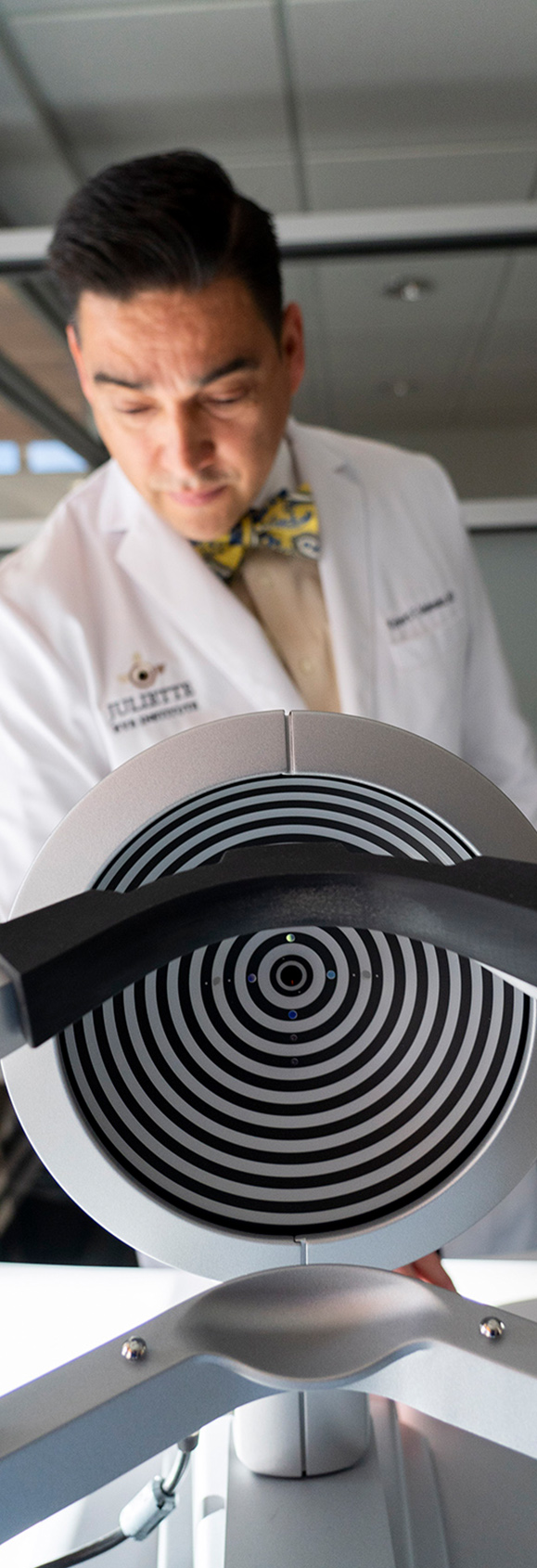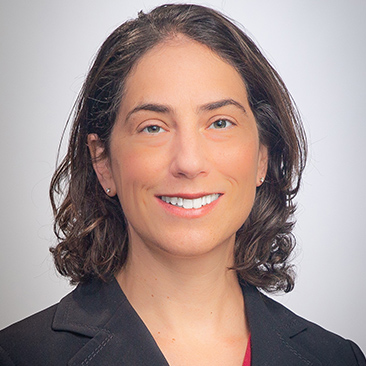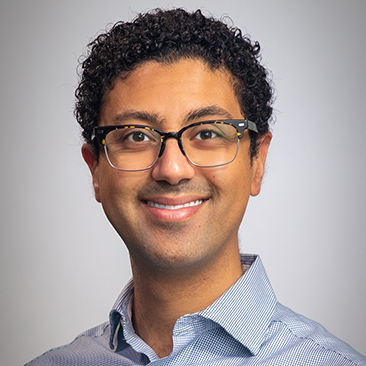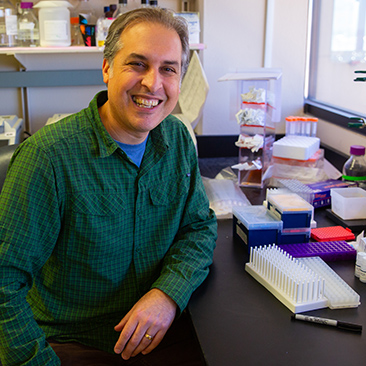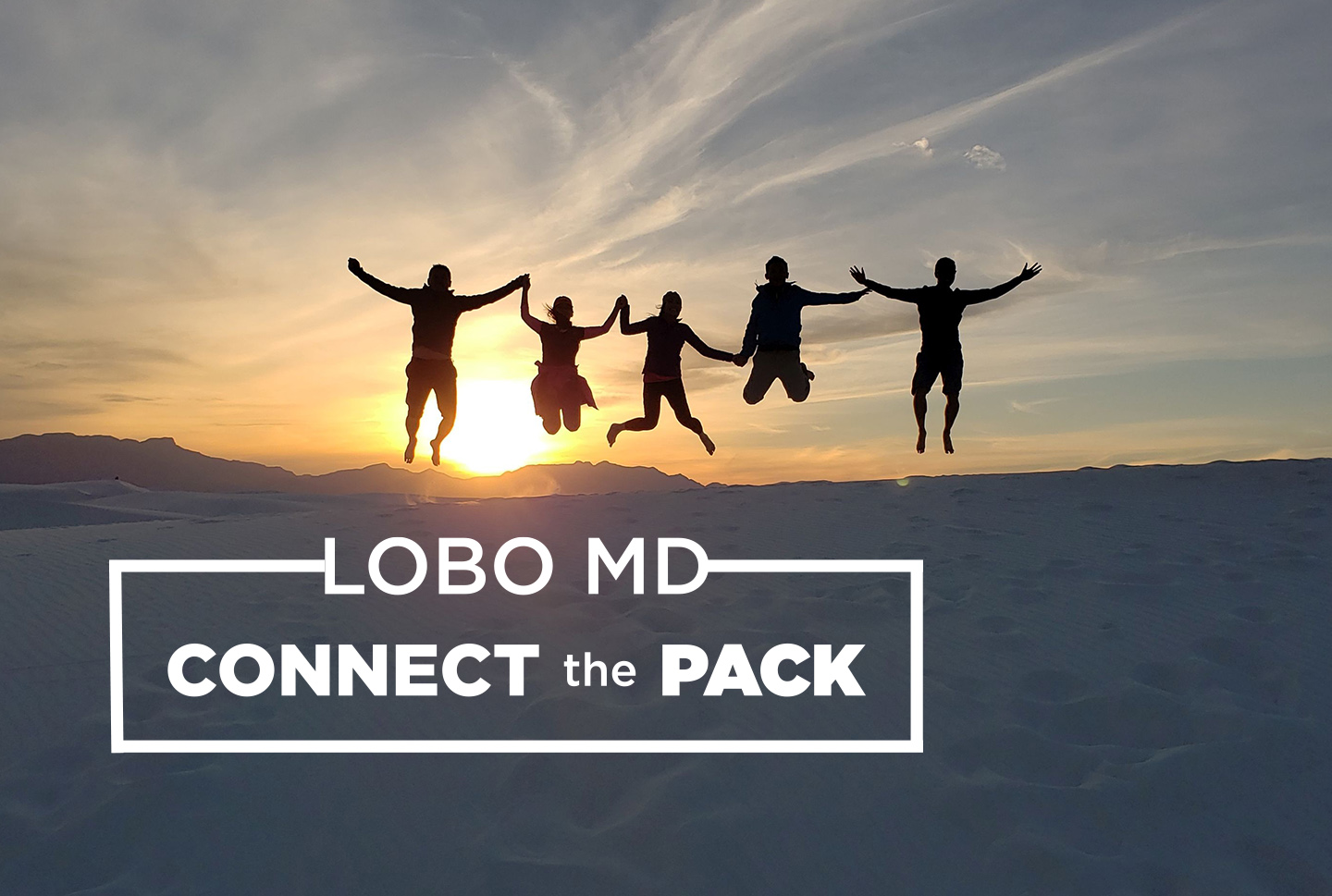UNM Medicine
THE UNIVERSITY OF NEW MEXICO SCHOOL OF MEDICINE ALUMNI MAGAZINE
Spring 2021 edition

Cover Story: Mentorship to Partnership
Long before they purchased a building together to co-locate their new practices – Juliette Eye Institute and Retina Consultants of New Mexico – Robert Melendez, MD ’00, and C. Nathaniel Roybal, MD, PhD ’07, had a relationship that began through mentorship at The University of New Mexico School of Medicine.
READ
MORE
CLOSE
Cover Story: Mentorship to Partnership
Robert Melendez and C. Nathaniel Roybal share a clear vision for the future By Emily Monteiro Morelli - photography by Jose Rodriguez
Long before they purchased a building together to co-locate their new practices – Juliette Eye Institute and Retina Consultants of New Mexico – Robert Melendez, MD ’00, and C. Nathaniel Roybal, MD, PhD ’07, had a relationship that began through mentorship at The University of New Mexico School of Medicine.
Besides their alma mater, Melendez and Roybal share much in common. Both are successful, driven and innovative. Both are highly respected ophthalmologists who left long-term professional partnerships to start private practices in the middle of the COVID-19 pandemic. Both practices share an office building and are dedicated to providing world-class care and exceptional patient experiences.
And, perhaps most importantly, both have dedicated time, energy and imagination to serve and improve their beloved New Mexico medical community by mentoring the next generation of physicians.
“I’m passionate about it because I had many great mentors myself, such as Dr. Frank Marez, ’77,” Melendez says. “I value when someone takes time to give back. When a student reaches out to me with questions, I think back to how I felt when someone helped me get to the next level. [Becoming a physician] is like climbing a 100-step incline, and I see my role as helping with one of those steps.”
While he has mentored at least 30 students during his career as volunteer faculty at UNM, Melendez has also touched the national stage as a member and chair of the American Academy of Ophthalmology’s Young Ophthalmologist Committee.
“I developed business resources for young ophthalmologists, and oversaw the online ONE Network program, developing the first-ever educational app for ophthalmologists around the world,” he says. A popular feature is the ONE Minute Video series, providing extracted footage of the most difficult parts of surgeries.

A passionate innovator, Melendez also founded the Juliette RP Vision Foundation, named, like his practice, in honor of his mother, whose diagnosis with retinitis pigmentosa catalyzed his career choice as a young boy. The foundation awards scholarships to visually impaired students and research grants to young scientists conducting retina research.
Melendez, who obtained an MBA from the UNM Anderson School of Management, is also passionate about business mentoring. He founded a digital and print magazine, Ophthalmology Business Minute, and published a book on leadership, Focus on Your Passion, Not the Position. He will also publish a second business book in the coming months.
Roybal shares that passion for business. He founded Retina Consultants of New Mexico with a larger vision in mind.
“I started my private practice not only to provide patients with the experience of world-class care and a chance to have a relationship with their doctor, but also because being a business owner allows me to become a different kind of leader and mentor in New Mexico,” he says.
“I believe sole practitioners and independent practices are the future of medicine in New Mexico. Small physician-owned practices is how we’ll take care of our rural areas. I want to help mentor physicians through the process of opening their own clinics.”
Growing up in northern New Mexico in a family of nine kids, Roybal never knew a physician beside his family pediatrician. Luckily, he decided to pursue a career in medicine. Community physicians are an important resource for young students thinking about the possibility of a career in medicine. They are often the only link between students and medicine.
“Mentorship is everything,” Roybal says. “I mentor undergraduates, medical students, residents and fellows because they are the only legacy we will leave in medicine. The medical profession is about human connection and mentorship is how we recruit and retain our best people. Mentorship is the anchor that links all of our current experiences to the possibilities of tomorrow.”
Roybal credits mentors in his PhD program with teaching him a love of science, however when he knew he had an interest in learning about ophthalmology on the clinical side, “I was fortunate to run into Rob Melendez, and other UNM ophthalmologists like Arup Das, who took me under their wing and gave me the confidence and belief in myself to apply to an ophthalmology residency.
“Our greatest successes come from someone identifying those characteristics and talents that will eventually make us great and pushing us, ‘the baby eagles’ – out of the nest. Mentors know we can fly well before we realize that for ourselves.”
That nudge out of the nest for Roybal culminated in a prestigious EyeSTAR post-doctoral fellowship and residency at UCLA, followed by a retina fellowship at the University of Iowa.
Both physicians are also active in research mentoring.
Dr. Roybal has been the principal investigator in several landmark clinical trials, is a key opinion leader in ophthalmic imaging and is currently heavily involved in the development of artificial intelligence protocols for the detection and treatment of diabetic retinopathy. He mentors medical and undergraduate students and helps them submit abstracts, give presentations and get published.
Research is the best way to stay on the cutting edge and have a tremendous impact on medicine,” he says.
Melendez, who also has a master of science degree, recently rekindled his passion for research, submitting independent institutional training grant applications to look at ways to improve outcomes after cataract and LASIK surgery.
Roybal recently became president of the UNM School of Medicine Alumni Association (a role Melendez has previously held), and views his term of service as a chance to magnify the organization’s role as cheerleader for New Mexico physicians.
“We ultimately want our medical students to be successful and we want them to join our community of New Mexico physicians,” he says. “The association can provide avenues for mentorship for our students to come home with strong support and a safety net. We want to grow and develop outreach for our residents and become an even stronger voice for students.
New Mexico is a fantastic place to practice medicine. I couldn’t imagine any other state where a physician could have a bigger impact on the community."
For Roybal, Melendez and other mentors played a critical role in his own return to New Mexico.
“My mentors said, ‘I’m practicing in New Mexico, I’m doing very well, it’s great for my family, and I love it.’ This type of insight is critical when you are making long-term decisions. It is a dream come true to get the training I’ve gotten [and] to be able to practice in my home state and use my training to its maximal potential.”

“My 'why,'” Melendez says, “is to contribute, and I do that by challenging the status quo to try to find a better way, which is something I pass on to mentees: find a better way, whether it’s to start a foundation, a practice or a business magazine. I’ve mentored high school, college, medical students, young ophthalmologists – it reminds us of why we’re alive. Nothing can replace that kind of ‘payment.’”
Although their relationship started as a one-to-one mentorship, Roybal and Melendez are living proof of the ripple effects of that mentoring relationship and its ability to bridge the past with the present, shaping a vibrant future of medicine in New Mexico and its countless students, patients, physicians and communities. Mentorship is rewarding, and if you get really lucky your mentees will become lifelong friends.

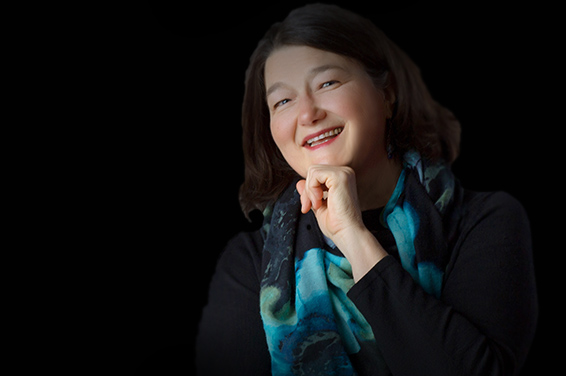
Dean's Letter
Dear Friends,
I have spoken often in the past year of the inspiration I experienced serving alongside a network of individuals dedicated to the work and mission of The University of New Mexico School of Medicine during the COVID-19 pandemic. Everyone at our institution inspired me. Their work and commitment has been monumental.
As the vaccine continues to roll out, we are invigorated by new hope. I am especially grateful to Gov. Michelle Lujan Grisham, Department of Health Sec. Tracie Collins, MD, MPH, Deputy Sec. Laura Parajón, MD, and Human Services Department Sec. David Scrase, MD, for their unwavering work of leading our state through this crisis. Drs. Collins, Parajón and Scrase are all UNM School of Medicine faculty.
I see a cautious sense of relief in our faculty, staff and learners and share their obvious gratitude for this new line of defense against the disease.
READ
MORE
CLOSE
Dean's Letter
Dear Friends,
I have spoken often in the past year of the inspiration I experienced serving alongside a network of individuals dedicated to the work and mission of The University of New Mexico School of Medicine during the COVID-19 pandemic. Everyone at our institution inspired me. Their work and commitment has been monumental.
As the vaccine continues to roll out, we are invigorated by new hope. I am especially grateful to Gov. Michelle Lujan Grisham, Department of Health Sec. Tracie Collins, MD, MPH, Deputy Sec. Laura Parajón, MD, and Human Services Department Sec. David Scrase, MD, for their unwavering work of leading our state through this crisis. Drs. Collins, Parajón and Scrase are all UNM School of Medicine faculty.
I see a cautious sense of relief in our faculty, staff and learners and share their obvious gratitude for this new line of defense against the disease.
As we make our way through and past this very challenging time, I applaud Dr. Douglas Ziedonis, Executive Vice President for Health Sciences and Chief Executive Officer of the UNM Health System, Dr. Michael Richards, Vice-Chancellor for Clinical Affairs, UNM Health System and the entire health system for their leadership. Our CEOs, Kate Becker at UNM Hospital, Jamie Silva-Steele at UNM Sandoval Regional Medical Center, and Dr. Robb McLean at UNM Medical Group, Inc., have all been remarkable.
Most importantly, thank you to those on the front line who care for patients in every imaginable way — providers of medical care, housekeeping, food services, supply chain, etc.
Thank you also to our educators and researchers — faculty, staff and learners — who have changed and adapted time after time, creating a workforce for health care and researching to discover and implement new knowledge and treatments.
We have been at the forefront of treating patients and we are taking the lead to end this crisis by turning The Pit, UNM’s indoor sports arena, into a mass vaccine distribution center. UNM Health continues to play an incredibly important role in helping New Mexico become one of the most vaccinated states in the country.
I recognize that it is now time – and imperative – that just as our patients, communities and nation begin to recover, so too must our faculty and staff begin to take some much-needed time for wellness and recovery.
As more of the country is vaccinated, we slowly make efforts to reconnect with one another. While we still cannot gather as much as we would like, now is a unique time for reconnecting in new and innovative ways.
The Office of Advancement and Alumni Relations has launched the “Lobo MD Connect the Pack” survey , which I encourage you to complete. This is an opportunity to update your contact information, make your voice heard and inform the Alumni Association about the benefits you would like to receive as an alumnus. We want to stay connected with you and to connect you with your classmates and colleagues from across the nation.
I hope this edition of UNM Medicine, like the vaccine, will give you hope and anticipation for a renewed connection with us. I hope the stories of mentorship inspire you to believe in the power of coming together to serve the community. I also hope that, if you are in a position to do so, you consider making a monetary donation to the School of Medicine through the UNM Foundation. Your generosity goes a long way in supporting our school’s mission.
May you, and your families, stay healthy and safe. Take good care of yourself and the ones you love. Please continue to follow COVID-safe guidelines to keep our communities moving in the right direction. You are all in my thoughts and heart.
With warm regards,![]()
Martha Cole McGrew, MD
Interim Dean, UNM School of Medicine
At a Glance
CLOSE
New OMI Chief named; New Pediatric Neurosurgery Division Created
NEW LEADERSHIP AT OMI
Heather Jarrell, MD, has been named Chief Medical Investigator for the New Mexico Office of the Medical Investigator (OMI).
Jarrell had served as interim chief since April 2020.
As the state’s only medical investigator office, OMI investigates any death occurring in New Mexico that is sudden, violent, untimely and unexpected – or where a person is found dead and the cause of death is unknown.
Operated as a special program within The University of New Mexico Department of Pathology, OMI determines the cause and manner of death in these cases and provides formal death certification. In 2020, OMI handled nearly 10,000 death investigations.
“Dr. Jarrell has been phenomenal in the interim role,” said Martha Cole McGrew, MD, OMI board president. “She has the confidence of the staff, is an active and reflective leader and has really showcased true leadership during the unprecedented situation with COVID-19.”
“A big thanks to the search committee for their leadership on this national search process,” said Douglas Ziedonis, MD, MPH, Executive Vice President for Health Sciences and CEO of the UNM Health System. “Dr. Jarrell is a most outstanding choice, and we are all fortunate to have her leadership. I am looking forward to seeing OMI grow in all mission areas and continue to make an impact for so many throughout New Mexico.”
“I am honored and humbled to be the sixth chief at the OMI,” Jarrell said. “My passion for our staff and our mission to investigate deaths to serve the living is near and dear to my heart. I want to thank everyone at OMI who has really gone above and beyond during the pandemic and works tirelessly every day.”
Jarrell attended the Mercer University School of Medicine and received her MD in 2008. She completed her residency and fellowships in pathology at the University of Virginia and Virginia Commonwealth University. She joined OMI in 2014. Jarrell has also completed medical missions in Zambia, Honduras, Peru and Tanzania.
FORWARD THINKING

Division of Pediatric Neurosurgery Created
The UNM School of Medicine has created a new Division of Pediatric Neurosurgery, which will make board-certified expertise and advanced procedures available for New Mexico children who require brain or spine surgery.
The new division, established within the UNM Department of Neurosurgery, includes Heather Spader, MD, who recently joined the faculty as an associate professor and will serve as division chief, and James Botros, MD, who had been the state’s only pediatric neurosurgeon since joining UNM in 2018.
“We have the only board-certified pediatric neurosurgeons in New Mexico,” said Martha Cole McGrew, MD, interim dean of the School of Medicine. “This division is incredibly important for children and families in our state.”
Spader’s appointment is especially significant given that there are very few female neurosurgeons in the U.S., and fewer still are division chiefs or chairs, McGrew added.
“We have the only board-certified pediatric neurosurgeons in New Mexico,” said Interim Dean Martha Cole McGrew, MD. “This division is incredibly important for children and families in our state.”
“The creation of the Division of Pediatric Neurosurgery shows the commitment of UNM to support Drs. Botros and Spader, the only two board-certified pediatric neurosurgeons in New Mexico, in building a regional center of excellence for pediatric neurosurgery,” said Meic Schmidt, MD, MBA, chair of the Department of Neurosurgery.
Spader said creation of the new division offers “an enormous opportunity” to build a program to serve underserved New Mexicans.
“There’s a real need to have us here,” she said.
Pediatric neurosurgeons are trained to treat a wide range of problems, she said, including brain tumors, epilepsy, hydrocephalus, craniosynostosis (in which the bony plates of a baby’s skull prematurely fuse), spina bifida, and spasticity due to cerebral palsy.
Spader did her neurosurgery residency at Brown University, followed by a pediatric neurosurgery fellowship at the University of Utah. Most recently, she practiced at Joe DiMaggio Children’s Hospital in Hollywood, Fla.
Spader’s research focuses on the use of advanced neuroimaging analysis to pinpoint locations in the brain that are causing epileptic seizures. Most epilepsy can be treated medically, but when that doesn’t work, surgical removal of the affected tissue can help.
Botros, an assistant professor, completed his neurosurgery residency at the University of Texas Southwestern Medical Center in Dallas and his pediatric neurosurgery fellowship at the Children’s Hospital of Los Angeles. Prior to Spader’s arrival last month Botros had been the only fellowship-trained pediatric neurosurgeon in New Mexico – on call 24 hours a day, seven days a week.
“This is a really exciting time at UNM,” he said. “Both Dr. Spader and I are really dedicated to providing care to all the children and young adults of New Mexico.”
During periods when there were no board-certified pediatric neurosurgeon practicing in the state, New Mexico children often were sent elsewhere for care – to hospitals in Colorado, Arizona and Texas.
“That will no longer be necessary,” Botros said. “Having two providers improves access to care and will improve our ability to do patient and provider outreach and education. It will really allow us to grow and to develop as a department.”
Botros already conducts virtual consultations with clinicians around the state, Spader said. Going forward, the division will work with the Access to Critical Cerebral Emergency Support Services telemedicine program, which uses videoconferencing to connect physicians around the state with UNM neurologists and neurosurgeons. “That’s No. 1 on our list of things,” she said.
Now that the new division has become a reality, Spader’s long-term goal is to add a third neurosurgeon and create a pediatric neurosurgery fellowship program.
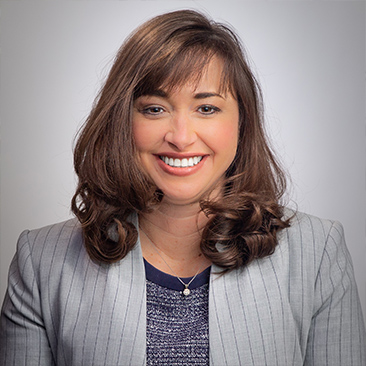
Global REACH
Project ECHO Shares COVID-Prevention Measures at Home and Abroad
READ
MORE
Most stories about the start of the COVID-19 pandemic are similar: everything stopped, no one knew what to expect and many were not prepared. But the story of what happened to The University of New Mexico School of Medicine’s Project ECHO (Extension for Community Health Outcomes) is different.

Global REACH
Project ECHO Shares COVID-Prevention Measures at Home and Abroad By Kara Leasure Shanley
CLOSE
Most stories about the start of the COVID-19 pandemic are similar: everything stopped, no one knew what to expect and many were not prepared. But the story of what happened to The University of New Mexico School of Medicine’s Project ECHO (Extension for Community Health Outcomes) is different.
As a virtual learning model for distributing medical knowledge and mentoring for best practice implementation, ECHO was already ahead of the game.
“[ECHO] was growing at about 70% a year, and then when COVID-19 came along, what we found was we had this human network,” says Sanjeev Arora, MD, Project ECHO’s founder and director. With information about COVID-19 changing daily, many countries were wondering how to respond.
Luckily, ECHO already had 800,000 learners in 155 countries prior to the pandemic. At a local level, ECHO hosted several sessions weekly for doctors across the state and with the New Mexico Department of Health.
“Hundreds of doctors would join,” Arora says. “They would present cases and the problems they were having, and we were sharing the latest knowledge with them.”
ECHO also responded nationwide in addition to partnering with divisions of the U.S. Department of Health and Human Services (HHS) and the Centers for Disease Control and Prevention. “We put a lot of attention on activating the entire country’s network so that all 250 hubs were doing ECHO for COVID-19 in their respective states,” Arora says.
Specifically, HHS’s Agency for Healthcare Research and Quality asked for ECHO’s help to address nursing home deaths. “Obviously we were a little nervous,” Arora says. “We had never done anything at this scale – there are 15,000 nursing homes in the U.S. – but we definitely felt that it was not a call that we could refuse.”
ECHO developed curricula for 9,000 nursing homes across the country, including connecting nursing home staff with epidemiologists and quality improvement experts from academic health centers to teach them about COVID-19 and how to handle it in their facilities.
One nursing home in South Dakota was even able to save 98% of its residents from COVID-19 after staff learned how to administer bamlanivimab monoclonal antibody treatment from ECHO.
But COVID-19 in the U.S. wasn’t ECHO’s only focus.
ECHO also partnered with the World Health Organization, UNICEF and others to provide training on everything from vaccine rollouts through COVAX to treating HIV patients during the pandemic. In addition, ECHO received a large grant from the Audacious Project and others to train health care workers in low-income countries.
“Essentially, it was a global response,” Arora says. “ECHO became the center of it in many ways, because all these international agencies found that it was effective.”
Arora appreciates that without the flexibility of The University of New Mexico leadership and staff who helped ECHO get the necessary people and funds to quickly respond to the pandemic, these efforts would not have been possible. “To do such a large project, you need all hands on deck,” he says.
Arora also thinks that ECHO received some useful lessons. “The good takeaway is that we learned ECHO can be highly effective as a global response to a pandemic.”

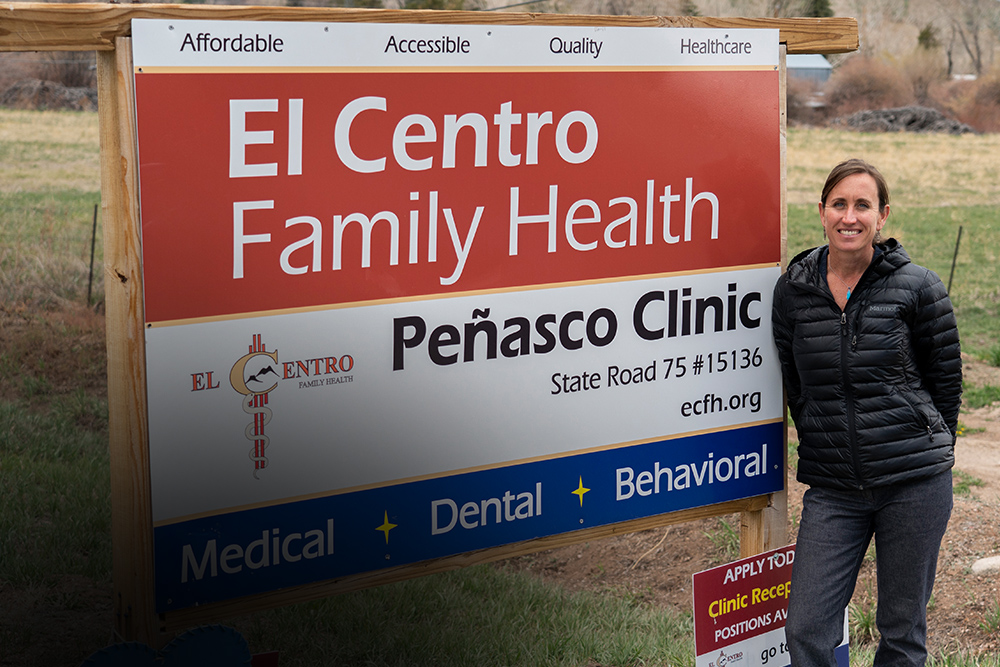
Primary Preceptor
When Laura McCutcheon, MSPAS ’15, enrolled in The University of New Mexico School of Medicine's physician assistant (PA) program, she knew she wanted to specialize in rural primary care. But like most PA students, she was anxious about being the only provider in a remote location without another medical professional to help.
READ
MORE
CLOSE
Primary Preceptor
Laura McCutcheon introduces physician assistant students to the rewards of rural health care By Kara Leasure Shanley - photography by Jose Rodriguez
When Laura McCutcheon, MSPAS ’15, enrolled in The University of New Mexico School of Medicine's physician assistant (PA) program, she knew she wanted to specialize in rural primary care. But like most PA students, she was anxious about being the only provider in a remote location without another medical professional to help.
Now, as a clinical lecturer and preceptor in the PA program, McCutcheon teaches students that not only is this an unfounded fear, but also that rural health care can be an eye-opening and fulfilling opportunity.
McCutcheon had lived in Peñasco, N.M., since 2003 and spent one of her clinical rotations there. After graduating in 2015, she returned to work at the El Centro Family Health Clinic and the Peñasco school-based health clinic (SBHC).
Doing rural medicine fits my personality,” McCutcheon says. “I really like the challenges of not having everything available to us here and really having to work with what we have.
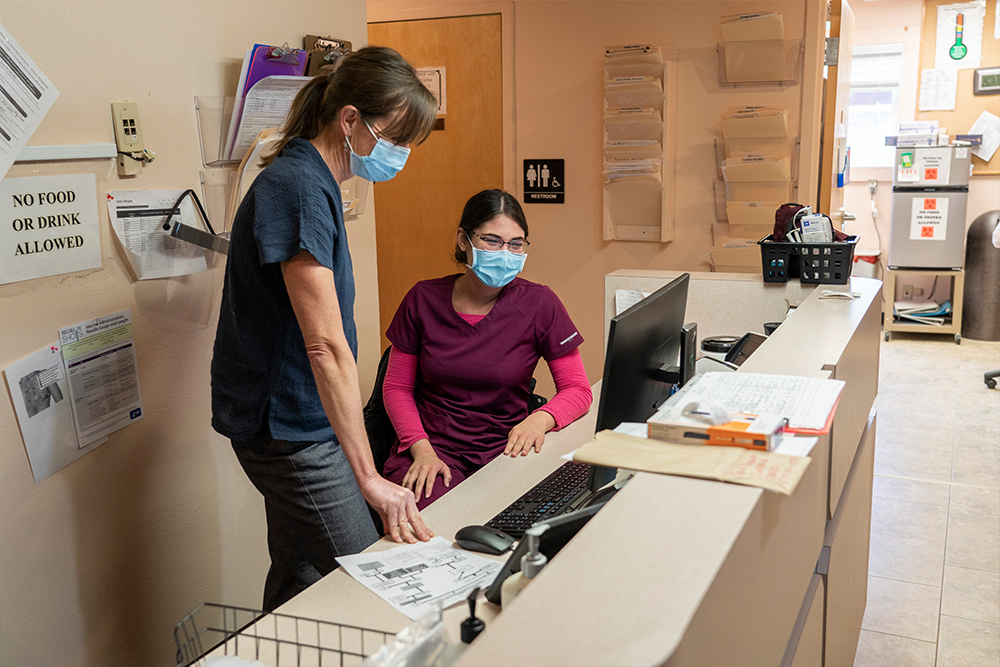
McCutcheon says that one advantage of being a rural provider is genuinely getting to know the community. She is most proud of the relationships she has built with her teen patients at the SBHC, which has also expanded to their families in her practice at El Centro.
“I think it’s allowed a large degree of trust and integration into people’s lives, where I’m seeing multiple generations of the same family throughout their life spans,” she says.
Despite knowing her community well before becoming a PA, McCutcheon was still surprised by the socioeconomic disparities she discovered upon her return. “I think working in health care enlightened me as to how deep those disparities are and how limited our resources are in rural New Mexico,” she says.
This is why McCutcheon believes it is important for PA students from UNM to rotate in clinics like hers and hopefully specialize in rural primary care. “It’s really beneficial to the students to come up here and see what it’s like,” she says.
McCutcheon thinks that even if students do not choose to specialize in rural primary care, it is still important for them to understand and appreciate what happens to their patients after discharge, including the patients’ living situations and access to resources in rural areas. She appreciates that UNM’s PA program strongly encourages its students to rotate as much as possible in the more remote parts of New Mexico.
As a preceptor herself, McCutcheon hopes that she helps PA students appreciate the importance of rural health care and even sways some of them to follow her example. “That’s one thing I hope to impart to people is how needed we are and how fun it can be.”
Life's Work
Logic of Discovery: Tudor Oprea seeks out new uses for existing drugs
READ
MORE
As the governing principle of computing, logic is one of the most important tools in all science and technology. It also guides Tudor Oprea, MD, PhD, to ask philosophical questions about what diseases are and how to find new drugs to treat or cure them.
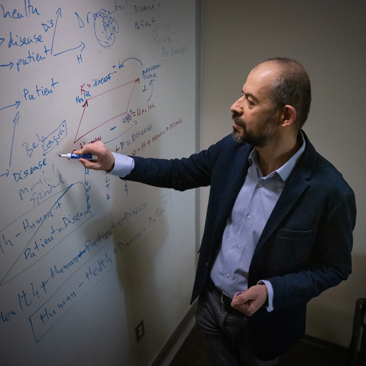
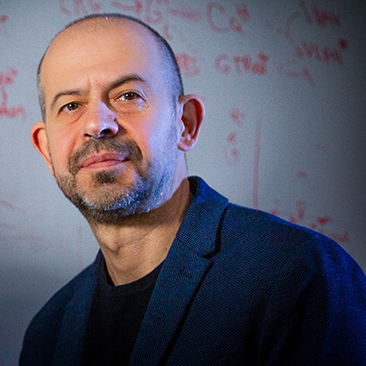
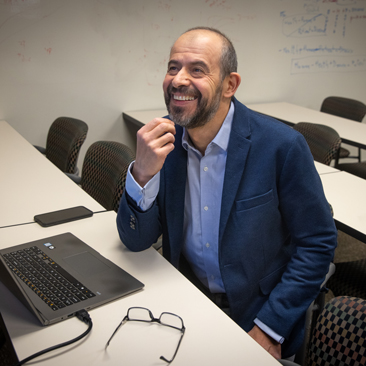
Life's Work
Logic of Discovery: Tudor Oprea seeks out new uses for existing drugs By Kara Leasure Shanley
CLOSE
As the governing principle of computing, logic is one of the most important tools in all science and technology. It also guides Tudor Oprea, MD, PhD, to ask philosophical questions about what diseases are and how to find new drugs to treat or cure them.
“To be frank, there are nights sometimes where I can’t sleep because of this,”
“We don’t have answers, and most scientists I talk to don’t seem to be bothered by it, " he says. This unease and his approach to correct it has guided Oprea’s curiosity and determination throughout his career.
Oprea, professor and chief of the Translational Informatics Division in The University of New Mexico School of Medicine’s Department of Internal Medicine, grew up in Romania, where he learned to approach everything with a healthy dose of skepticism.
“That’s the first thing about growing up there – the (Communist) party lies – which led to me refusing to read anything in the Romanian language, because I thought everything was a lie,” he says.
Instead, Oprea sought out science fiction and other books in English and French, including one in particular. “Somehow, a book of general chemistry fell into my hands and I started reading it like a novel,” he recalls.
That was the moment Oprea knew he wanted to study chemistry, but when he was recruited by the army, they discovered he was partially color blind – which in Romania meant he couldn’t drive, work with computers or study chemistry (though he has done all three since).
So, he decided to pursue his MD/PhD at the University of Medicine and Pharmacy while enduring government-scheduled blackouts and hot water shutoffs. In his spare time, Oprea also sought out experts at his university to teach him quantum chemistry and how drugs interact with protein receptors.
However, while volunteering at a county hospital near his hometown, a government-induced steroid shortage led to the deaths of 10 patients from anaphylaxis. “I decided I don’t want to be a physician in a system that kills people,” Oprea says.
Luckily, his boundless curiosity set him on a new path.
After seeing three-dimensional molecular models for the first time, Oprea took postdoctoral positions studying molecular and protein modeling in Missouri and New Mexico, followed by a research position at Astra Zeneca in Sweden and a professorship at West University of Timișoara in Romania.
There, his interest evolved again – this time it was drug discovery.
Oprea returned to New Mexico in 2002 to work on high-throughput drug screening with Bruce Edwards, PhD, and Larry Sklar, PhD, in UNM’s Center for Molecular Discovery. He went on to build the Drug Central database for drug discovery, discover novel cancer drugs with his collaborators Eric Prossnitz, PhD, and Angela Wandinger-Ness, PhD, and lead the Knowledge Management Center for Illuminating the Druggable Genome.
Today, Oprea’s focus has shifted to the unknown, including the dark genome – genes and proteins whose functions in the human body are not well understood – and rare diseases. Oprea has turned to computing to help decipher these mysterious topics.
“When I take all this knowledge and I try to patch it together, I’m looking at what are the definitions for diseases. I’m trying to map diseases to targets to drugs.”
In his mind, Oprea’s proudest achievement so far has been to get two drugs – raltegravir and ketorolac – into clinical trials to treat cancer through his collaborations with UNM researchers and physicians. “I’m really rooting for us having a drug on the market,” he says, “because I think it would really help put the university on the map of drug discovery.”


Resounding Mentorship in Rural Medicine
Brooklyn Cochrane started her third-year medical school rotation at Piñon Family Practice in Farmington, N.M., in the spring of 2020. But after only two weeks, the COVID -19 pandemic forced a halt to rotations for Cochrane and her fellow UNM medical students.
For the many students across the country who had been placed in rural rotations, this would be a lost opportunity to experience the unique benefits and challenges of rural medicine. But thanks to Brooklyn’s own upbringing, she had already acquired hours of community-based medical education under her mentor in medicine and friend in music, Joseph Pope, MD ’91.
READ
MORE
CLOSE
Resounding Mentorship in Rural Medicine
by Ashley Salazar
Brooklyn Cochrane started her third-year medical school rotation at Piñon Family Practice in Farmington, N.M., in the spring of 2020. But after only two weeks, the COVID -19 pandemic forced a halt to rotations for Cochrane and her fellow UNM medical students.
For the many students across the country who had been placed in rural rotations, this would be a lost opportunity to experience the unique benefits and challenges of rural medicine. But thanks to Brooklyn’s own upbringing, she had already acquired hours of community-based medical education under her mentor in medicine and friend in music, Joseph Pope, MD ’91.
Pope, a former Navy corpsman, talented viola player and 1991 graduate of The University of New Mexico School of Medicine, completed his residency through the University of Colorado at St. Mary’s Hospital in Grand Junction, Colo.
While at St. Mary’s, Pope became friends with Kristen Cochrane, a nurse who shared his passion for music. Shortly after moving to Farmington with her husband, Keith Cochrane, former director of Instrumental Music at San Juan College, Kristen convinced Pope and his family to move there as well.
The first baby that Pope delivered in Farmington was Brooklyn – Kristen and Keith’s daughter. It was a beautiful beginning to Brooklyn’s musical and medical connection with Pope.
Brooklyn had a passion for music from an early age, but it was not until her music teacher became ill that Brooklyn began to take interest in medicine as well.
“I reached out to Dr. Pope and I asked, ‘Can I come and shadow you and see what you do?’” Brooklyn said. “He just welcomed me with open arms. Whatever I wanted to do – if I wanted to follow him, if I wanted to follow one of his PAs or any of the other doctors involved there.”
After shadowing Pope for the first time, Brooklyn’s interest in medical practice became a passion for community medicine.
“I remember leaving the first time after shadowing thinking, ‘This is what I was meant to do, like this is where I want to be,’” she said. “These people are so nice and so caring and not just about the health of the community but also the well-being of their patients.’”
Pope said Brooklyn was fearless. “We let her do stuff. ‘You want to give this a shot? Do you want to do this procedure?’” he said. “And she would say, ‘Where are my gloves? Let’s go do it.’”
Pope believes every physician is ultimately a mentor, because they have to teach their patients. It is no surprise that he sees value in mentoring students as well. He estimates that more than 100 students have shadowed the physicians in his office since he founded Piñon Family Practice in 1998, and he knows the mutual benefits of clinic-based education.
“Students do take up time . . . there is always a downside to having a student around, but the upside is they keep asking you questions. We try to put the student in the position of becoming the teacher. There are a lot of reasons that having them around makes us better. They challenge us.”
Taking students has always been a part of the strategic plan for Piñon Family Practice, Pope said.
“We had in our long-term plan, ‘We need to have students. We need to help, especially those from the Four Corners, with experience,’” he said. “Our ulterior, long-term motive is to recruit someone and have them fill our shoes, so we can leave. And they can take care of the practice, and they can take care of us.”
The plan is working. Recently, Piñon retained a new family doctor, William Curtis Young, MD ’16, the son of Bill Young, MS ’02, a long-time physician assistant at the clinic. Like Brooklyn, Piñon’s newest physician spent much of his formative years learning from providers at the practice.
“We have known him all his life – shadowing at every opportunity,” Pope said. “We thought of our future as including him, and that is the most amazing example of what we are trying to do.”
Brooklyn’s specialty choice was also impacted by her time with Pope at Piñon. “His passion inspired me to go out on my own and get to know this [family medicine] community better, so I got a job at Presbyterian working with their Women’s Services department.”
When it was clear what Brooklyn wanted her career to look like, she asked Pope for a little more advice: “Where should I go to [medical] school to get the best shot at a career like this?”
Naturally, Pope recommended UNM, where he was influenced by family medicine mentors of his own, including emeritus faculty members Burt Umland and Warren Heffren. “Dr. Pope’s emphasis of not only the patient but also the community comes from UNM,” Brooklyn said. “They really emphasize that, not only in family medicine, but in everything.”
When third-year rotations approached, Brooklyn was eager to put all she had learned at UNM into practice at Piñon once again. “Rotation with [Dr. Pope] was going to be the pinnacle,” she said. “I had come to this point where I could be helpful in clinic and see patients on my own.”
Unfortunately, COVID-19 cut the rotation short. It even halted Brooklyn’s plans to play her oboe in a musical concert with Pope. Despite some disappointments, the short rotation offered one final and lasting impact on Brooklyn, as she was able to experience early response to the pandemic with the Piñon team.
As time would tell, the Farmington community was among the hardest hit by the virus in New Mexico, and Brooklyn was impressed by the team’s quick response, setting up one of the first tent testing sites in the state. “They made a big impact on that community for sure,” Brooklyn said.
Brooklyn will take what she learned in the short rotation at the start of a pandemic and years of mentorship from Pope with her into the next phase of her medical education journey – a residency in obstetrics and gynecology at the University of Hawaii.
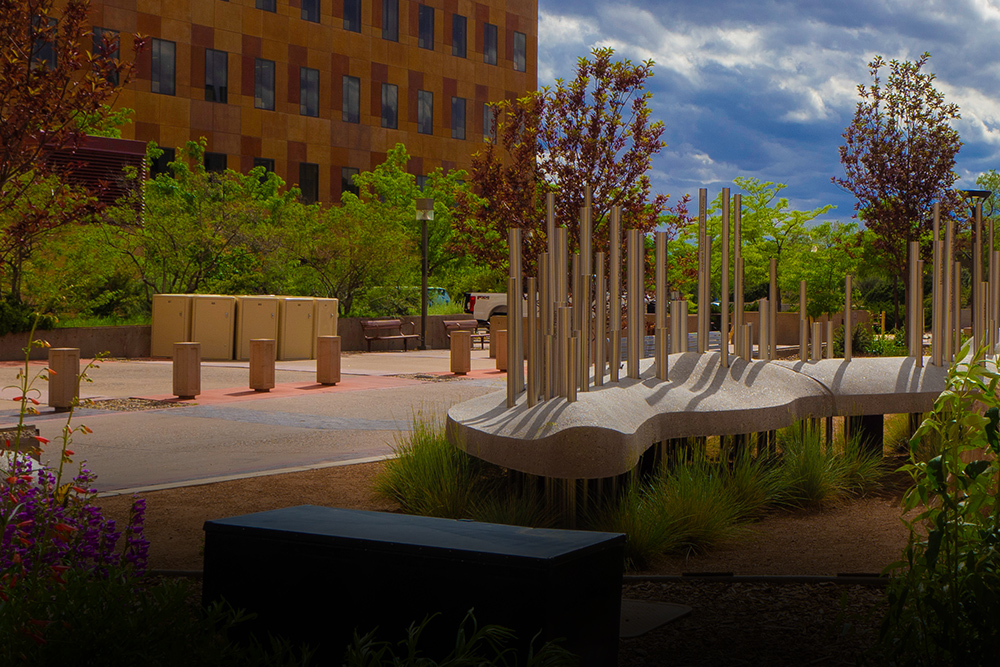
Giving Profile
Before The University of New Mexico School of Medicine was founded in 1964, private practice neurosurgeons would staff the Bernalillo County Indian Hospital and travel to rural towns in New Mexico with a packet of instruments to conduct surgical procedures.
They treated a wide variety of problems, including spinal tuberculosis and frequent pituitary tumors. But the groundwork laid by founding faculty, like Michael Pollay, MD, enabled the school to develop into the institution able to provide deep resources for surgical education and community health known throughout the country today. se treatments are generally available.
READ
MORE
CLOSE
Giving Profile
LEGACY OF SERVICE: Remembering Michael Pollay, MD By Ashley Salazar
Before The University of New Mexico School of Medicine was founded in 1964, private practice neurosurgeons would staff the Bernalillo County Indian Hospital and travel to rural towns in New Mexico with a packet of instruments to conduct surgical procedures.
They treated a wide variety of problems, including spinal tuberculosis and frequent pituitary tumors. But the groundwork laid by founding faculty, like Michael Pollay, MD, enabled the school to develop into the institution able to provide deep resources for surgical education and community health known throughout the country today. se treatments are generally available.
Pollay completed his medical doctorate at the University of Wisconsin–Madison in 1955 and surgical education at the University of Colorado Hospital in Aurora, where he ultimately became the chief resident in neurosurgery. By 1963, he was recruited to Albuquerque to serve as an instructor and to help establish the new medical school.
At the time of his arrival in New Mexico, there was no UNM Health Sciences campus. Pollay and other founding faculty members worked out of the Indian Hospital, and early anatomy labs for the school were set up in a nearby abandoned 7-Up bottling plant.
Pollay developed an intense clinical service in Albuquerque before there was an intensive care unit or trauma center. He and Ralph Kaplan, MD, assisted by a surgical or orthopedic resident, shared every other night call. Pollay also conducted research and developed a laboratory to study cerebralspinal fluid physiology. While on the faculty he helped to develop the curriculum and training programs for the new medical school. Eventually, Pollay rose to professor of Neurosurgery and Physiology.
In 1976, he left the UNM School of Medicine to join the University of Oklahoma College of Medicine faculty as professor and chair of Neurosurgery, a position he held until 1994.
Pollay derived the greatest joy in his professional and scientific career from his role as a teacher of the many students, interns, residents and fellows with whom he worked. Even after his departure from UNM, he and his wife Peggy, a retired nurse, established an endowed scholarship through La Tierra Sagrada Society, a group formed to support the financial needs of medical students.
Pollay passed away after a lengthy respiratory illness in February 2021. His expertise and passion for education, as well as his service to the people of New Mexico, are greatly appreciated and fondly remembered. You can submit remembrances and learn more about his life and career in neurosurgery at the UNM School of Medicine’s Virtual Faculty Memorial webpage.
Student Affairs
Seventy years ago, my father was born into a farming family outside of Shahrekord, my ancestral home in Iran. It was an impoverished household of calm commitment to their collective struggle. The economics of small farming trapped the family because it provided enough food and money to survive but offered no surplus in capital to empower a change in the household’s trajectory. The reality of their situation was felt by all.
READ
MORE
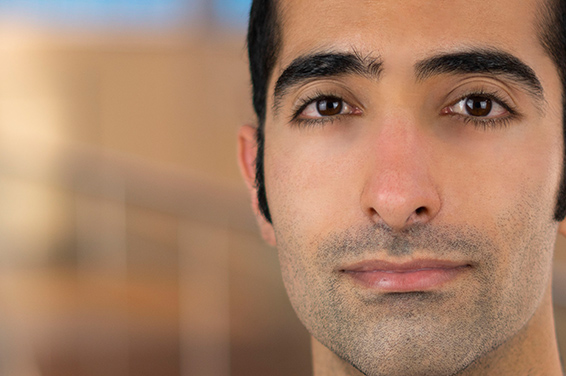
CLOSE
Student Affairs
Our Familial Journey By Rosstin Ahmadian - MD/PhD Candidate - Photography by Jose Rodriguez
Seventy years ago, my father was born into a farming family outside of Shahrekord, my ancestral home in Iran. It was an impoverished household of calm commitment to their collective struggle. The economics of small farming trapped the family because it provided enough food and money to survive but offered no surplus in capital to empower a change in the household’s trajectory. The reality of their situation was felt by all.
My grandmother always had food prepared (usually bread, eggs or yogurt) but every meal was devoid of meat, an expensive luxury unavailable to them. The children trod the four miles to school in shoes that were two sizes too big, a strategy to lengthen the shoe’s life. My grandfather would forego new work shoes altogether. Consequently, at the end of a work day, my father would massage his father’s feet with different lotions but no matter how hard he tried, he could never make his Dad’s feet soft again.
Our subscription to the legacy of poverty and famine abruptly ended with my grandfather because he knew subsequent generations would suffer without a forceful change in our family’s trajectory. He prohibited the children from farming ever again and each was expected to pursue careers in business or academia with money sent home to pay for help on the farm. He pushed his children to emigrate and sacrificed the continuity of generations in his presence so that a new family legacy may be forged.
Today, at family celebrations such as No-Rooz (New Year), I am surrounded by my Dad’s generation, all business owners, doctors and professors. They are a unique embodiment of the American Dream because their success required separation from the ones that came before them. I am a continuation of their story and that courageous decision made by my grandfather so long ago.
A glass bottle flew past my father’s head and shattered at the bottom of a dark stairwell. At first, he did not realize the bottle was meant for him.
After my father served two years in the Iranian military, a requirement of all male citizens, my parents scraped together $900 for their journey to the United States. My mother studied nursing and my father studied electrical and computer engineering. My father worked the night shift at a local diner for $2.50 an hour to make ends meet.
Shortly after my parents arrived, anti-Iranian sentiment flooded the country with news of the hostage crisis. My parents witnessed the transformation of American public opinion towards Iranians. Once welcomed, my father now had to dodge glass bottles hurled in the night as he descended from his university apartment. His dark hair and thick accent made him the target of racial slurs and he ceased to be Mr. Ahmadian, he was The Iranian. These events were over 10 years before I began my own journey in America.
I stand on the shoulders of paladins, my forefathers, who severed family ties for the good of children and grandchildren they had yet to meet. It is the tapestry of their sacrifices that propel my mission to better the lives of those around me and this country that I call my own. This is why I train to become a physician-scientist.
As my ancestors did for me, I hope to empower my patients and their families to write the next chapter on their terms.
Helping Students Fund Their Passions
La Tierra Sagrada Celebrates 25 Years
READ
MORE
Committing to becoming a physician means beginning a journey that can take a decade to complete. Students bring their passion to the endeavor – but all too often they leave with backbreaking debt that requires another decade to pay off. La Tierra Sagrada has provided more than $1 million in financial support to UNM’s medical, physician assistant, physical therapy and occupational therapy students.
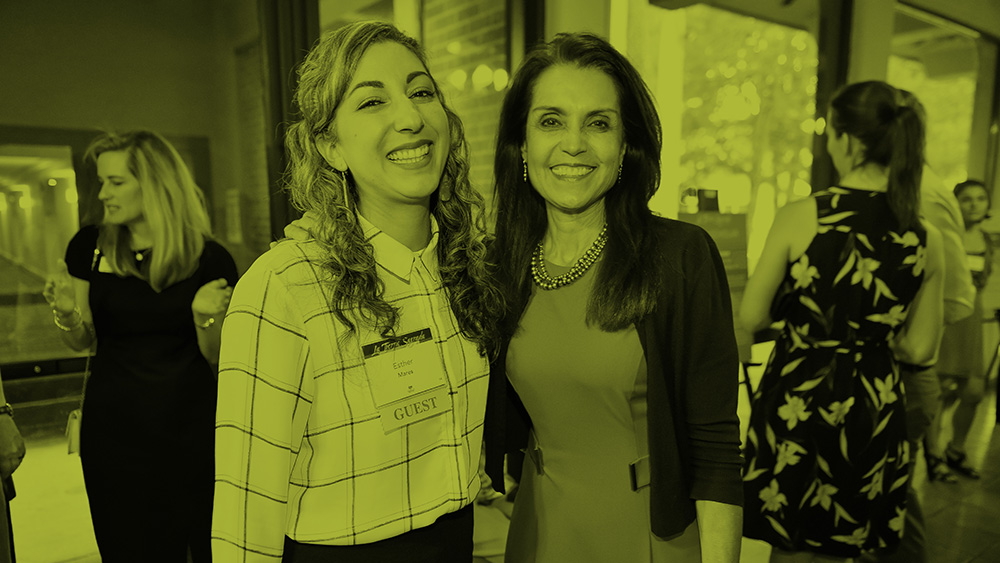

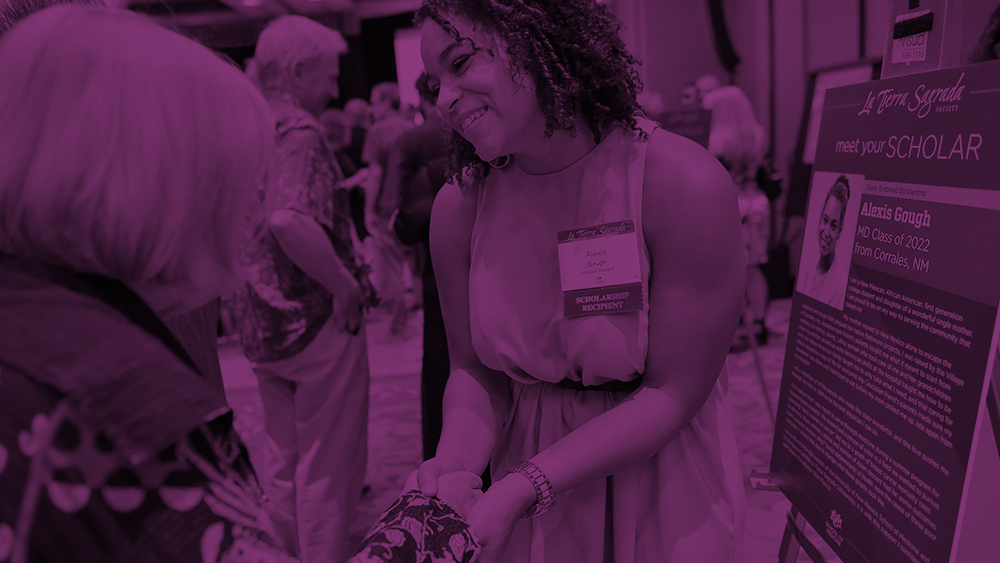
Helping Students Fund Their Passions
La Tierra Sagrada Celebrates 25 Years By Cindy Foster
CLOSE
Committing to becoming a physician means beginning a journey that can take a decade to complete. Students bring their passion to the endeavor – but all too often they leave with backbreaking debt that requires another decade to pay off. La Tierra Sagrada has provided more than $1 million in financial support to UNM’s medical, physician assistant, physical therapy and occupational therapy students.
La Tierra Sagrada Society, which is celebrating its 25th anniversary this year, was created to enhance the safety net available to students in The University of New Mexico School of Medicine and reduce that debt during their education.

“After I became dean, I realized that we needed to do a better job in developing and growing a larger audience of friends to the medical school,” says Paul B. Roth, MD, MS, former Chancellor for Health Sciences and longtime dean of the School of Medicine.
The School of Medicine, opened in 1964, had just passed the 30-year mark when Roth was appointed dean in 1995. It was still considered a young institution nationally. By contrast, most other medical schools had been around for many decades.
“They have had generations of graduates who have finished their careers and set up estate planning to give back to their medical school,” Roth says.
“In 1996, most all of our graduates were still in practice, many were at the beginning of their careers and many were still paying off student loans,” Roth says. “We did not have several generations of people with a history with the school.”
And most UNM medical students – despite paying relatively low tuition– were amassing large amounts of student debt to finance their education. “My dream was to eventually get to the point to where there would be free tuition and fees,” he says.Even if the medical school were fortunate to gain the support to cover tuition, students would still be facing debt and living expenses related to attending medical school, according to Roth.
“Tuition and fees probably account for less than half of the total cost medical students incur, and students will still have to pay for books and to pay for room and board,” Roth says. “Those costs are sometimes covered through financial aid and loans but the whole idea is to try to reduce – if not eliminate – any kind of student debt.”
That insight led to the founding of La Tierra Sagrada Society.
“I thought it was a very good time to begin growing the base of donors for the medical school, and I think that, over time, we have seen an increase in the number of gifts and support for the medical school,” Roth says.
One of the more substantial gifts to the School of Medicine was provided in 2014 by Diane Klepper, MD, a professor emerita who had long-shared Roth’s passion for supporting students – especially those from rural areas of New Mexico.
Klepper arrived at UNM as a pulmonary medicine fellow in 1967. She went on to serve as the medical school’s assistant (later associate) dean for admissions and student affairs for 31 years.
“Diane really took the idea of building an alumni association and ran with it,” Roth recalls. “We created the Friends of the Medical School, which morphed into LTSS. She has been a great student advocate and advisor and really helped countless students. I still have former students who ask about her and praise her for the work she did.”
Klepper continued to work with the organization after her retirement, and in 2014 she provided for the endowment of a dollar-for-dollar matching fund for scholarships to rural students
The School of Medicine’s Alumni Association had a history of helping students with emergency loans, Roth says, but as a community-based organization, La Tierra Sagrada created a revenue stream from a broader pool of donors.
The organization’s name – Spanish for “the sacred earth” – was the idea of then-School of Medicine development officer Deborah Sarkas. “We knew we wanted a name that would be culturally sensitive and appropriate that also spoke to our mission, Roth remembers.
In the beginning, the school also awarded grants to help with student-funded research. The research was a requirement of the school and had to be overseen by a faculty mentor, Roth says. “The grants were designed to help provide for the costs of a community research projects.”
The grants were phased out several years ago and the organization now concentrates entirely on scholarships.
La Tierra Sagrada Society has pushed past the $1 million mark in supporting medical student scholarships and community-based research grants. Recipients are chosen by the organization’s 13-member board after students complete an application process.
“It is an honor to receive an award and to know you have that kind of support as you continue your studies,” says Fermín Prieto, a Class of 2021 graduate.
Over the past three years the society has opened up its process and now also awards scholarships to students in the physician assistant, occupational therapy and physical therapy programs.
The medical school also benefits from LTSS-generated ideas. “Through the years, the LTSS boards and presidents – several of who were from outside the medical school – provided new understanding and vigor to the organization,” says Roth, who retired in 2020.
“Each year we would meet to think about some things that might be helpful for the medical school. It evolved as I began understanding and gaining more insights into the needs of the medical students.”
Elena D. Bissell, MD, an associate professor in the UNM Department of Family & Community Medicine, traces wanting to be a physician from her family’s experience with their GP when she was a child. “He was an integral part of our lives,” she says. “He delivered babies and he helped my dad receive the specialty care he needed when he developed a chronic medical condition.”
Paying for medical school as a first-generation student required “lots and lots of loans,” she says. “Receiving the LTSS scholarship helped.”
While there are various levels of benefits that come from giving tiers, any donation to the medical school brings with it admission to LTSS, says Ashley Salazar, the School of Medicine’s chief advancement and external relations officer.
Any gift in any amount to a School of Medicine scholarship fund is valued and recognized by La Tierra Sagrada Society. “Our motto is, ‘When you give, you belong,’” she says. “La Tierra Sagrada celebrates that small universe that understands what our students are going through.”
In the end, it all comes back to helping students stay afloat financially as they make their journey to become physicians.
Roth looks back fondly on the awards dinners that the society hosted through the years.
“They would always have me sit at a table with a scholarship recipient and his or her parents,” he says. “I would get to hear their stories and how completely and enthusiastically grateful they were to receive the financial support and how it was helping get through medical school.
“It was always an exhilarating moment to sit and listen to each family history, to hear the degree of passion students had for medicine in general and how grateful they were to receive this additional support.”
For more information on ways to join LTSS, contact Erika Anderson at emanderson@salud.unm.edu
or 505.272.1913

LTSS
giving levels

Any gift in any amount to a School of Medicine scholarship fund is valued and recognized by the La Tierra Sagrada Society. Donors to LTSS for any of these scholarships are called “Supporting Donors.”

With an annual gift of $1-$999, you will be listed as a Cherry Donor in the scholarship dinner program. CLICK TO JOIN

With an annual gift of $1,000- $2,499, you will be listed as a Turquoise Donor in the scholarship dinner program.
CLICK TO JOIN

With an annual gift of $2,500-$4,999, you will be listed as a Silver Donor in the scholarship dinner program. CLICK TO JOIN

With an annual gift of $5,00-$24,999, you will be listed as a Gold Donor in the scholarship dinner program. CLICK TO JOIN

With a gift of $25,000 or greater, you establish a named endowed scholarship to be awarded annually and you will be listed in the scholarship dinner program as an Endowment Donor. CLICK TO JOIN

Any Scholarship. Any Amount.
La Tierra Sagrada is the largest scholarship entity at The University of New Mexico School of Medicine.
Committed to recognizing all who support scholarships at the School of Medicine, the La Tierra Sagrada Board of Directors is pleased to announce. . .
When you GIVE,
you BELONG.
Now, when you give to any UNM School of Medicine scholarship, you will belong to La Tierra Sagrada.
READ
MORE
SERVE THE PRESENT. SHAPE THE FUTURE.
La Tierra Sagrada is the largest scholarship entity at The University of New Mexico School of Medicine.
Committed to recognizing all who support scholarships at the School of Medicine, the La Tierra Sagrada Board of Directors is pleased to announce. . .
When you GIVE,
you BELONG.
Now, when you give to any UNM School of Medicine scholarship, you will belong to La Tierra Sagrada.
 PLEDGE "25"
PLEDGE "25"
Since 1996, the La Tierra Sagrada Society has awarded $1.7 million in scholarships and research grants. $1.2 million has gone directly to students through scholarships.
Make your impact and celebrate the 25th Anniversary of La Tierra Sagrada by Pledging “25.”
Give a one-time gift of $25, $250, $2,500 or a $25,000 endowment.
Faculty and staff donors are encouraged to consider giving a recurring “25” gift via payroll deduction.
For membership information, please contact Erika Anderson at 505.272.1913 or EMAnderson@salud.unm.edu
give online at: goto.unm.edu/ltss25
CLOSE
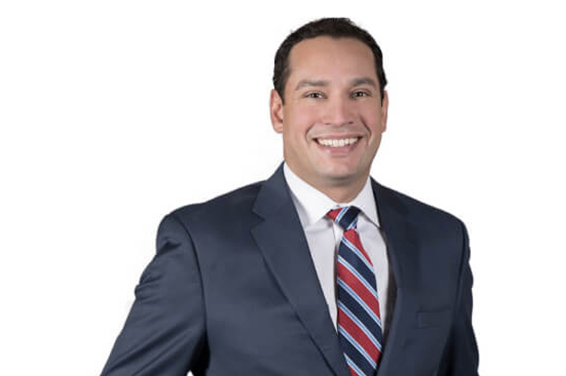
President’s Letter
Dear UNM School of Medicine Alumni,
It is a true privilege to write to the entire network of UNM School of Medicine alumni as your 2021 Alumni Association president.
Graduating with the School of Medicine’s first MD/PhD class and returning to serve New Mexicans as a vitreoretinal surgeon are two of my proudest accomplishments. We have great opportunities in the years ahead to utilize the Alumni Association as a tool to support our practicing physicians as they serve our fellow New Mexicans. You’ll see we have efforts to hear directly from you in the coming year.
As you read this magazine, you’ll find articles highlighting alumni who have mentored School of Medicine students.
This year and into the future, the Alumni Association will work to establish more opportunities for you to actualize your role in a mentor relationship. The “Meet Your Match” campaign pairs the newest graduates of the MD program with alumni who already practice in their specialty of interest. Please consider lending some of your time and talents to mentor one of our students.
READ
MORE
CLOSE
President’s Letter
THE UNIVERSITY OF NEW MEXICO SCHOOL OF MEDICINE ALUMNI ASSOCIATION
Dear UNM School of Medicine Alumni,
It is a true privilege to write to the entire network of UNM School of Medicine alumni as your 2021 Alumni Association president.
Graduating with the School of Medicine’s first MD/PhD class and returning to serve New Mexicans as a vitreoretinal surgeon are two of my proudest accomplishments. We have great opportunities in the years ahead to utilize the Alumni Association as a tool to support our practicing physicians as they serve our fellow New Mexicans. You’ll see we have efforts to hear directly from you in the coming year.
As you read this magazine, you’ll find articles highlighting alumni who have mentored School of Medicine students.
This year and into the future, the Alumni Association will work to establish more opportunities for you to actualize your role in a mentor relationship. The “Meet Your Match” campaign pairs the newest graduates of the MD program with alumni who already practice in their specialty of interest. Please consider lending some of your time and talents to mentor one of our students.
I’d like to invite you to attend our upcoming virtual town hall with Douglas Ziedonis, MD, MPH, Executive Vice President for Health Sciences and CEO of the UNM Health System, and Martha Cole McGrew, MD, interim dean of the School of Medicine. I hope this town hall becomes an annual event where alumni can interact with decision makers and help shape the agenda, not just for the association but within the School of Medicine. We hope to hear about your specific ideas.
In the coming year, the Alumni Association will also bolster efforts to recruit our graduating alumni back to our state. Look for upcoming events to connect our residents with employers within our state. New Mexico is a beautiful place with a rich and diverse culture. As alumni we have a powerful voice and a perspective of gratitude that needs to be heard by our prospective colleagues as they make these important life decisions.
Thank you for taking some time with UNM Medicine. I hope it will spur you to take action, get involved, become a mentor and use your voice to help us recruit physicians.
Thank you for all of your support. You are the School of Medicine’s proudest accomplishment.
Sincerely,
C. Nathaniel Roybal, MD, PhD ’07
President, Alumni Association
UNM School of Medicine
BOARD REPORT
UNM SCHOOL OF MEDICINE ALUMNI ASSOCIATION
BOARD OF DIRECTORS
C. Nathaniel Roybal, MD, PhD ’07 (President)
Alisha Parada, MD ’08 (Treasurer/Vice President)
Jennifer Phillips, MD ’01 (Immediate Past President)
Lawrence Andrade, MD ’00
Manuel Archuleta, MD ’73
Valerie Carrejo, MD ’04
Dion Gallant, MD ’99
Angela Gallegos-Macias, MD ’02
Albert Kwan, MD ’83
Mario Leyba, MD ’04
Robert Melendez, ’08
Daphne Olsen, ’17
Mario Pacheco, ‘86
Valerie Romero-Leggott, MD ’92
Linda Stogner, MD ’83
STUDENT & RESIDENT REPRESENTATIVES
Deanna Gonzales, MS ’21
Jessica K. Benally, MS ’22
EX-OFFICIO MEMBER
Martha Cole McGrew, MD
Interim Dean, UNM School of Medicine
ADVANCEMENT AND ALUMNI RELATIONS
CHIEF ADVANCEMENT AND EXTERNAL RELATIONS OFFICER
Ashley Salazar
MARKETING MANAGER
Bridgette Wagner Jones
PROGRAM MANAGER
Erika Anderson
PROGRAM SPECIALIST
Ryan Niemi
EVENTS PLANNER
Ruth Morgan
PROGRAM ADMINISTRATOR
Ashley Hatcher
STUDENT WORKER
Bryan Marquez
CONTACT
UNM School of Medicine
Office of Advancement and Alumni Relations
MSC 08 4720 • Fitz Hall #182B
1 University of New Mexico
Albuquerque, NM 87131-0001
505.272.5112
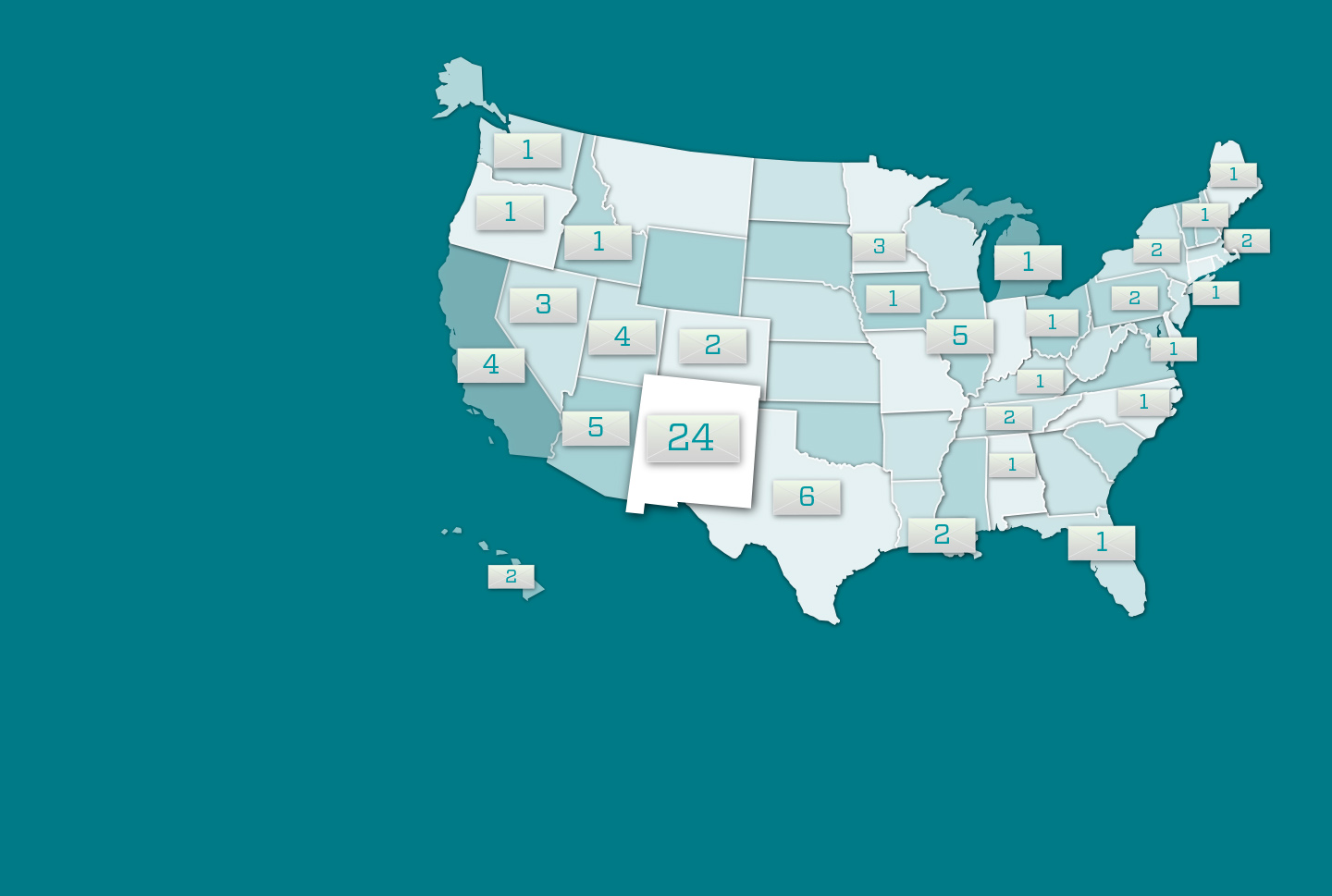
Cause for Celebration
Cheers and applause filled the Zoom space on Monday, March 15, as graduating UNM School of Medicine students eagerly opened their emails to discover where they matched for residency.
READ
MORE
CLOSE
Cause for Celebration
Residency Match Day 2021
Cheers and applause filled the Zoom space on Monday, March 15, as graduating UNM School of Medicine students eagerly opened their emails to discover where they matched for residency.
Match Day is an annual rite of passage. Fourth-year medical students across the country learn simultaneously where they will spend the next three to five years of their lives completing their medical training. This year, the UNM School of Medicine’s Match Day was the first (and hopefully last) to be held virtually.
Of the 83 members of the class of 2021, 24 (about 29%) matched in New Mexico and 23 of those matched at the UNM School of Medicine. That bodes well for the future physician workforce in New Mexico, because physicians typically decide where to practice based on where they performed their residency.
Nationally, more than 35,000 graduating medical students matched for first-year residency positions, with nearly half in primary care specialties, according to the National Residency Matching Program. The 2021 match cycle was the largest match on record with an increase of 2.7% from last year.
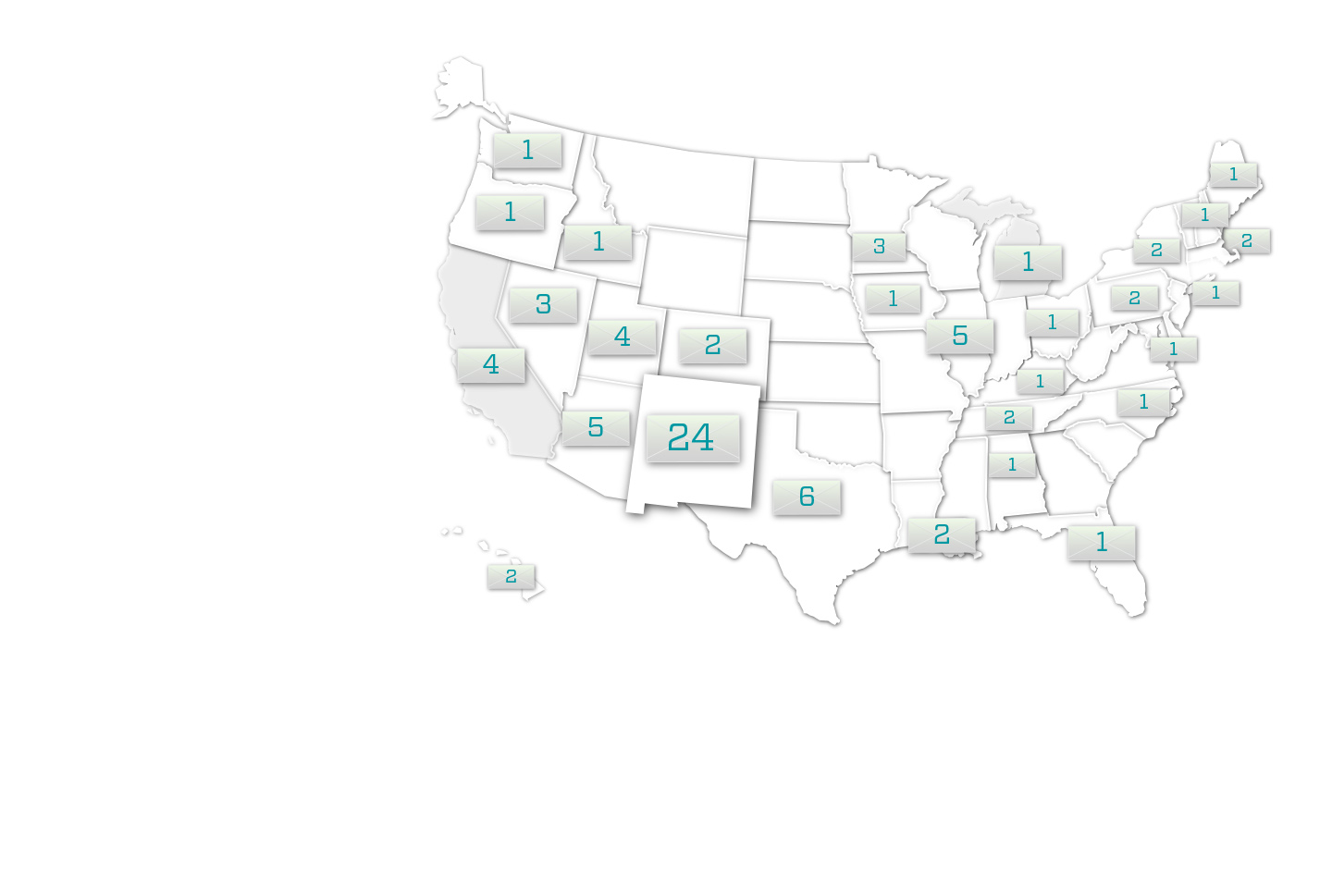
Class Acts
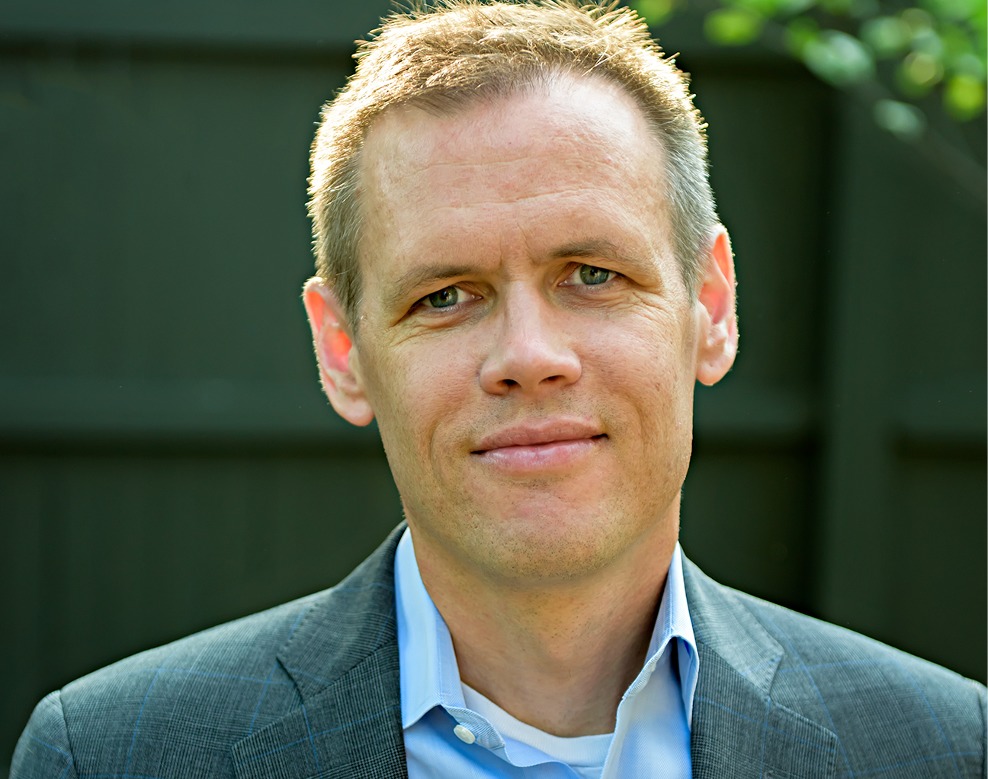
Robb McLean, MD (Faculty, House Staff alumnus) was named CEO of the UNM Medical Group, Inc.
Denise Gonzales, MD ’98
Denise Gonzales, MD ’98 was featured in “Trusted Voices,” a video series distributed by the New Mexico Department of Health that highlights experts in the medical field who share their opinion with New Mexicans on the importance and safety of getting the COVID-19 vaccine.
John Pederson, MD ’00
John Pederson, MD ’00 was featured on KOB-TV 4 Albuquerque, sharing his expert advice as a pediatrician for students returning to the classroom during the pandemic.
Vesta Sandoval, MD (House Staff alumna)
Vesta Sandoval, MD (House Staff alumna) serves as chief medical officer at Lovelace Health System in Albuquerque. She and her team created one of the country’s first COVID-19 drive-through testing sites – which started with a drawing on a paper napkin.
Michelle Ozbun, PhD (Faculty)
Michelle Ozbun, PhD (Faculty) was featured in a recent UNM HSC Newsroom article for developing and validating a method to test surfaces for virus particles.
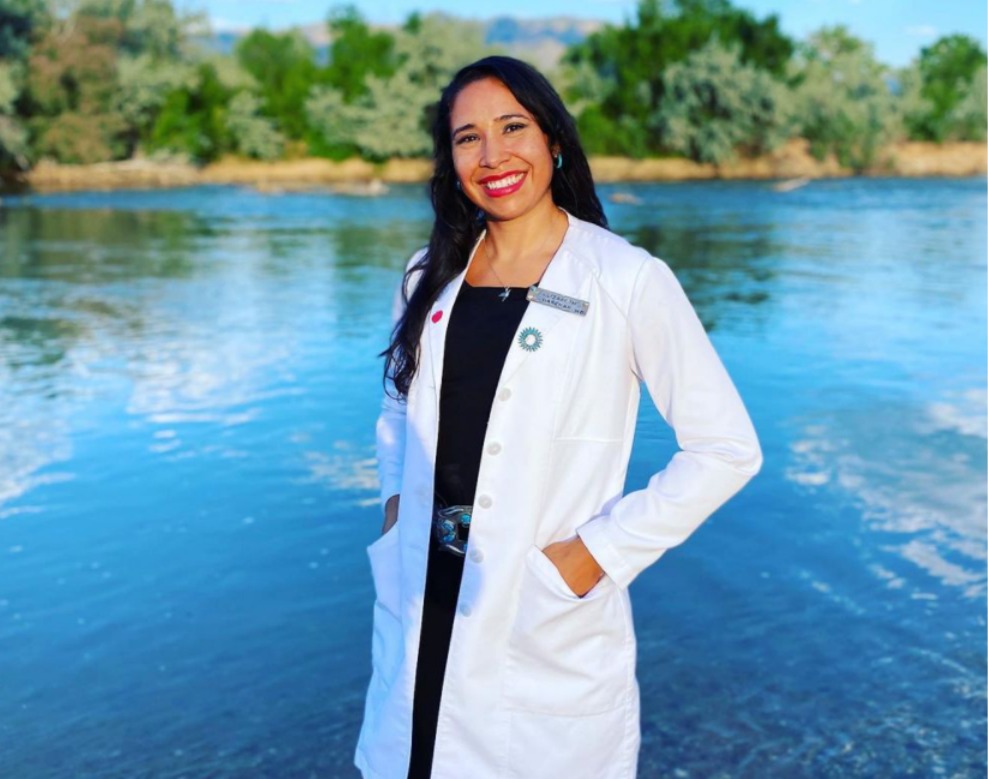
Elizabeth Garchar, MD ’16 shared her expertise on bodily changes and expectations for pregnancy in a recent UNM HSC Newsroom article.
Keri Rath, MD ’02
Keri Rath, MD ’02 and her friends in The Fabulous Ladies Book Club, helped to get the town of Ruidoso, N.M., vaccinated by setting up a pop-up vaccination clinic.
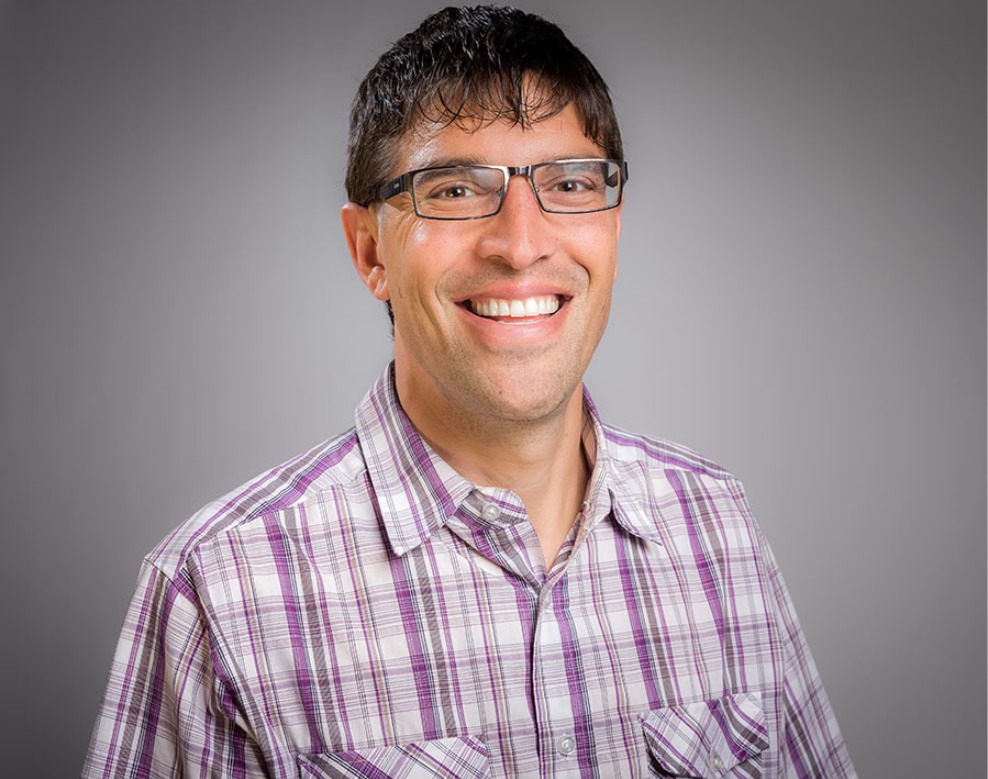
Antony Fleg, MD (Faculty) shared the best tips for helping community members to avoid the post-holiday blues.
William Curtis Young, MD ’16
William Curtis Young, MD ’16 has begun his medical career at Piñon Family Practice in Farmington, N.M. Young spent much of his childhood looking up to and learning from his father, Bill Young, MS ’02 a longtime physician assistant at the clinic.

All of our alumni are class acts. Help us brag a little!
Email us at unmsomalumni@salud.unm.edu or give us a call at 505.272.5112
READ
MORE
All of our alumni are class acts. Help us brag a little!
Email us at unmsomalumni@salud.unm.edu or give us a call at 505.272.5112
2021 ABQ Top Docs List
Allergy & Immunology Osman Dokmeci, MD, Shanze Wang, MD; Anesthesiology Christopher Arndt, MD, ’02, Niels Chapman, MD, David Leachman, MD ’00; Cardiology Mark Sheldon, MD; Colon & Rectal Surgery Rohini McKee, MD, Vinay Rai, MD; Dermatology David Carey, MD ’98, Suraj Reddy, MD ’04, Aimee Smidt, MD; Emergency Medicine Sanjay Kholwadwala, MD ’94; Endocrinology, Diabetes & Metabolism Ivan Pinon, MD; Family Practice Dion Gallant, MD ’99, Jennifer Phillips, MD ’01; Gastroenterology Andrew Mason, MD ’96, Nina Nandy, MD, Angelina Villas-Adams, MD ’05; General Surgery – Non-Robotic Gerald Demarest, MD, David Hoang, MD, Mario Leyba, MD ’04; Geriatrics Heather Brislen, MD ’07, David Scrase, MD, Julie Silverhart, MD ’03; Hospice Medicine Tamara Goodman, MD ’03, Nancy Guinn, MD ’96; Infectious Disease Meghan Brett, MD; Internal Medicine Lance Rudolph, MD, William Berlin, MD ’91, Megan Molleck, MD ’13; Medical Genetics Victor Vigil, MD ’87, Tom Cushing, MD ’02; Neurology Sally Harris, MD ’94, Amanda Deligtisch, MD, Daniel Shibuya, MD; Neurosurgery Mark Bryniarski, MD, Andrew Carlson, MD ’05; Obstetrics & Gynecology Eve Espey, MD, Kathleen Kennedy, MD;
CLOSE
Oncology/Hematology Jose Avitia, MD, Malcolm Purdy, MD; Orthopedics Jeffrey Racca, MD ’95, Deana Mercer, MD ’03, Gehron Treme, MD; Otolaryngology—ENT Ronald Escudero, MD ’81, Jason Mudd, MD ’06; Pain Medicine Eugene Koshkin, MD; Pathology David Martin, MD ’07, Nancy Joste, MD ’89, Arand Pierce, MD ’06; Pediatrics Sylvia Crago, MD ’92, Alwyn Koil, MD; Pediatric Cardiology Bharat Dara, MD ’05, Anne Greene, MD; Pediatric Endocrinology Deborah Allen, MD ’97, Ellen Kaufman, MD, Susan Scott, MD; Pediatric Pulmonology Laura Caffey, MD ’95, Elif Dokmeci, MD; Pediatric Specialist - Nephrology Craig Wong, MD, Jessica Ming, MD ’10; Pediatric Surgery David Lemon, MD, Jason McKee, MD; Physical Medicine Rebecca Dutton, MD; Plastic Surgery Jennifer Chan, MD; Preventive Medicine Bridget Lynch, MD ’10; Psychiatry/Psychology Ronald Romanik, MD; Pulmonology Michelle Harkins, MD; Radiology Brad Cushnyr, MD, Gary Mlady, MD; Reproductive Medicine Lisa Hofler, MD; Robotic Surgery Jeanine Valdez, MD ’06, Steven Gough, MD ’93; Rheumatology Nicole Emil, MD ’04; Sleep Medicine Nicholas Cutrufello, MD, Shanna Diaz, MD; Urology Frederick Snoy, MD, Jonathan Lackner, MD ’93; Julie Riley, MD
Congratulations to all of our faculty and MD and House Staff alumni who made the Albuquerque The Magazine 2021 Top Docs list
Setting the Record Straight
A Passion for Knowledge, A Reason for Giving
READ
MORE
When Jeffrey Gorvetzian passed away in late 2019, his family chose to remember him in a special way. Jeff’s brother, Joseph A. Gorvetzian, MD, a former UNM fellow in infectious diseases, and Joe’s wife, Nancy Croker, MD, established the Jeffrey Michael Gorvetzian Endowed Professor of Biomedical Research Excellence in the UNM Department of Molecular Genetics & Microbiology.
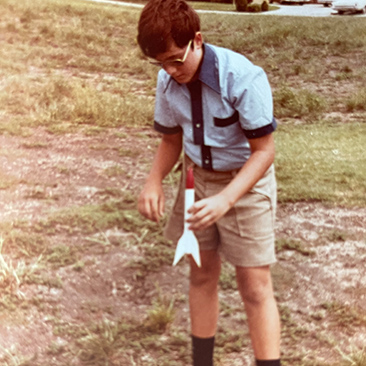
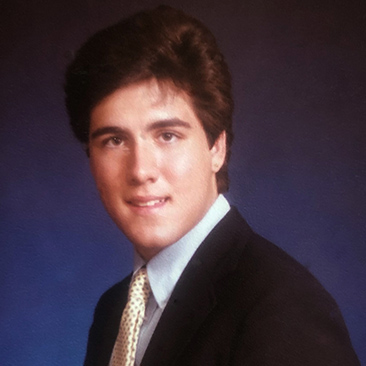
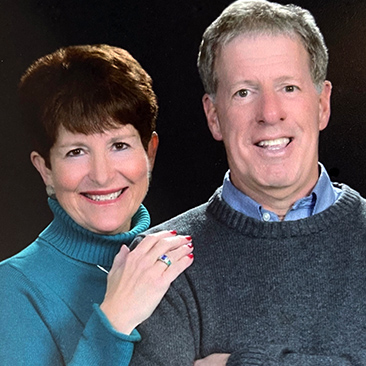
Setting the Record Straight
A Passion for Knowledge, A Reason for Giving By Ashley Salazar and Ken Thompson
CLOSE
When Jeffrey Gorvetzian passed away in late 2019, his family chose to remember him in a special way. Jeff’s brother, Joseph A. Gorvetzian, MD, a former UNM fellow in infectious diseases, and Joe’s wife, Nancy Croker, MD, established the Jeffrey Michael Gorvetzian Endowed Professor of Biomedical Research Excellence in the UNM Department of Molecular Genetics & Microbiology.
Jeff was not a doctor, but he had an incredible thirst for knowledge and a related passion for using what he learned to improve his own quality of life. Joe and Nancy fondly recall long, highly detailed discussions with Jeff on medical topics, prompted in part by Jeff’s own health struggles with obesity and heart disease.
Jeff went so far as to take biochemistry and cell biology courses to develop an understanding of the underlying science. Remarkably, he applied that understanding to his situation and, over several years lost more than 100 pounds and largely corrected his heart function.
In the course of his studies, Jeff became interested in autophagy, nutrigenomics and other processes at the cellular level. This led Nancy to introduce her brother-in-law to the work of UNM’s Autophagy, Inflammation & Metabolism Center. Jeff spoke on several occasions about making a contribution to help advance these fields of research that helped him improve his own health.
Jeff “would have been honored to be the sponsor of this endowed professorship, and we are proud to be able to create this in his name,” Joe says. “He will be greatly missed.”
While Jeff spent most of his life in Texas, Joe and Nancy met during residency at Banner Good Samaritan Medical Center in Phoenix, landed in Albuquerque for Joe’s fellowship, established a home, raised three children and became members of the local community and the UNM family. Joe, who graduated from the School of Medicine at the Texas Tech University Health Sciences Center, continues to practice in the area of infectious diseases.
Nancy, a graduate of Indiana University School of Medicine, practiced in Albuquerque as a pediatrician prior to retiring a few years ago. Their son Joseph “Joey” Gorvetzian, MD, graduated from the UNM School of Medicine in 2019.
Joey’s experience further enhanced the family’s ties to the School of Medicine because they all recognized how important UNM was to the community. Joe and Nancy began supporting La Tierra Sagrada Society in 2014, and created an endowed scholarship fund in 2015.
The family was also pleased that Bryce Chackerian, PhD, a professor in the Department of Molecular Genetics & Microbiology who was Joey’s first block mentor in medical school, was the first recipient of the Gorvetzian Professorship. Chackerian’s academic activities will be supported by the fund for a five-year period. Chackerian and Gorvetzian are both Armenian names, and everyone is tickled at that serendipitous start to the family’s newly established fund.
I’d like to express my gratitude for the gift from Dr. Joseph Gorvetzian and Dr. Nancy Croker to honor Jeffrey Gorvetzian and to support basic research at the UNM Health Sciences Center. I’m honored to be the first recipient of the endowed professorship and to use their generous gift to support research that our lab is doing to develop new vaccines.
- - Bryce Chackerian, PhD
NOTE:
This article is a revised and expanded version of a piece that first appeared in the Fall 2020 edition of UNM Medicine. Shortly after its original publication we learned of several errors and ambiguous references that led to confusion among readers. We apologize for those inaccuracies and have been honored to collaborate with Drs. Joe Gorvetzian and Nancy Croker in the publication of this revision. Their good-natured and humorous guidance has afforded the opportunity to print some wonderful photos of Joe’s brother, Jeff. In addition, we are providing a few words from Dr. Bryce Chackerian, the Jeffrey Michael Gorvetzian Endowed Professor of Biomedical Research Excellence.

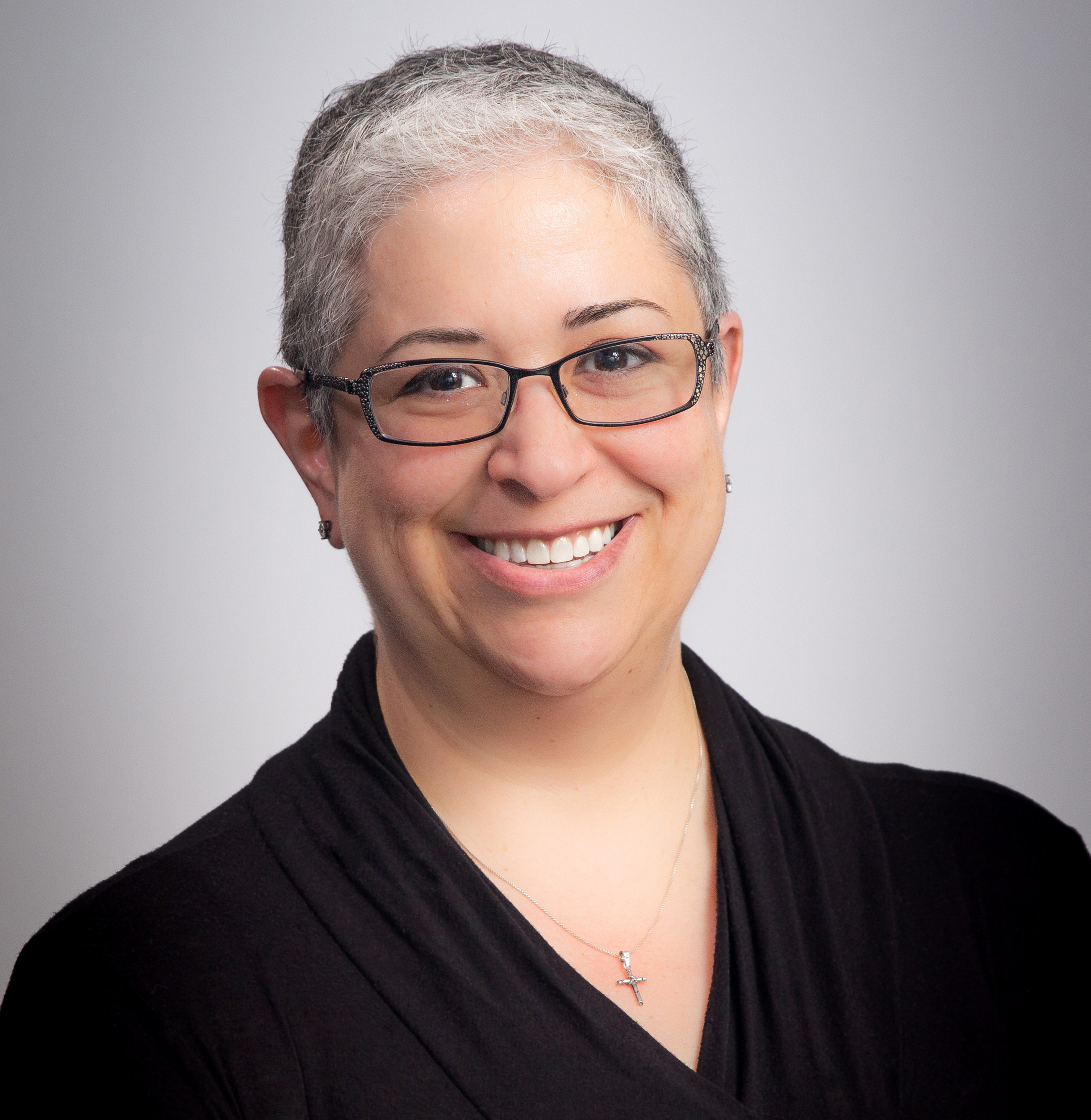
Latina Who Leads
Years ago, as a UNM School of Medicine student, Teresa A. Vigil, MD ’03, thought she was on the path to pursue a career in oncology.
But that all changed when she began her pediatrics rotation, which led to a residency in pediatrics in 2003.
READ
MORE
CLOSE
Latina Who Leads
Pediatrician Teresa Vigil Finds Joy in Her Patients and the Medical Students She Mentors By Rebecca Roybal Jones
Years ago, as a UNM School of Medicine student, Teresa A. Vigil, MD ’03, thought she was on the path to pursue a career in oncology.
But that all changed when she began her pediatrics rotation, which led to a residency in pediatrics in 2003.
“I felt good about going to work every day,” she recalls.
And she still does, even if her patient visits are conducted over Zoom due to COVID-19, instead of at The University of New Mexico Hospital.
“One of my favorite things to do is have a conversation with a kid,” says Vigil, adding that it also gives her an excuse to keep up with the latest comic books and Marvel characters.
These days, she asks her young patients how they’re doing. Are they sleeping OK? “‘How are you doing since you can’t see your friends at school?’ I talk to families and kids about (the pandemic),” she says.
A professor in the UNM Department of Pediatrics, Vigil completed her residency at UNM in 2006 and continued on as chief resident from 2006-2007. She has been in Pediatrics ever since, becoming a full professor last year. She’s also the assistant dean of students in the Office of Medical Student Affairs.
Around the UNM Health Sciences campus, Teresa A. Vigil (pronounced Teh-DEH-sa) is known affectionately by her colleagues and students as “TV.” “It distinguishes me from other people,” she says. “Just call me TV.”
Vigil grew up in Las Vegas, N.M., and comes from a family with a long history in the state. She credits her close-knit family as being her inspiration. Her mother taught 1st grade and her father was a professor of political science at New Mexico Highlands University.
“I wouldn’t be anywhere without my parents,” she says. “They always encouraged me to do exactly what I wanted to do. That thinking and encouragement got me here.”
Before applying to medical school, she earned her undergraduate degree in biology at UNM and worked at TriCore Reference Laboratories at UNMH for a couple of years. She began medical school in 1999.
“I was convinced that I was going to do medical oncology,” she says. “I had an uncle who had a brain tumor, and that’s probably where it (my interest in medicine) started. I loved hematology and oncology. In my third year, I gravitated to patients with cancer. But when I got to pediatrics, I felt like I was home.”
She decided to pursue the chief residency so that she could learn about administrative roles. “I felt like I could handle things pretty well,” Vigil says. “It just felt right that I could use the organizational skills that I was born with.”
Mentoring medical students is a big part of the job. Vigil draws on her own experiences of being mentored. “I really, really try to listen to what they want to do before I make a decision on how to help them,” she says.
“I just try to remember they’re unique. I ask them, ‘What’s your background? What have you done? What are your experiences?’ I can get an idea of where they want to go. I’m not there to influence them. I’m there to keep them on track for something they want to do.”
In 2014, Vigil transitioned to working with medical students in the Office of Medical Student Affairs, a role that she loves.
“I get to act like a shepherd, nudging students where they should go,” she says. But, she adds, “I’m not like a person shepherd.”
Vigil describes herself as being more like a German shepherd. “I use that analogy,” she says. “I’m actually nipping at their toes and nudging them with my nose.”
She loves watching the “incredible metamorphosis” students go through. “In their fourth year, they’re physicians,” she says. “They come in wanting to take care of people, and they walk out of here ready to care for them.”
CLOSE
Wherever our alumni roam, they deserve a bit of home.
This past year has left us all feeling disconnected. We intend to change that.
Let’s Connect the Pack!
Reengage with your alma mater and fellow alumni.
Get a special Lobo MD care package delivered to your doorstep when you complete our 2-minute survey.
CLICK TO GO TO THE SURVEY
Questions? Contact Erika Anderson at emanderson@salud.unm.edu
Joint Venture - a web feature
@ UNM Sandoval Regional Medical Center & Health Sciences Rio Rancho Campus
Joint Venture - a web feature
@ UNM Sandoval Regional Medical Center & Health Sciences Rio Rancho Campus
CLOSE
UNM Center of Excellence for Orthopaedic Surgery & Rehabilitation to Open at Health Sciences Rio Rancho Campus
By Michael Haederle
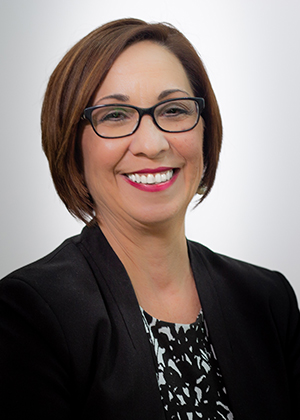 Construction is underway on The University of New Mexico Center of Excellence for Orthopedic Surgery & Rehabilitation, a new facility on the UNM Health Sciences Rio Rancho Campus that will unite clinical, educational and research activities under one roof.
Construction is underway on The University of New Mexico Center of Excellence for Orthopedic Surgery & Rehabilitation, a new facility on the UNM Health Sciences Rio Rancho Campus that will unite clinical, educational and research activities under one roof.
The two-story 50,000-square-foot structure, located adjacent to UNM Sandoval Regional Medical Center (SRMC) in Rio Rancho’s City Center, is expected to open next November, said Jamie Silva-Steele, RN, MBA, SRMC’s president and CEO. It will include exam rooms for patients to consult with surgeons, an extensive orthopedics research laboratory and a rehabilitation facility.
“It’s such a great synergy with what’s happening already at SRMC,” Silva-Steele said, noting that the hospital already hosts a robust joint replacement practice. “What I envision over the five-year period is that we’ll add five more total joint surgeons, plus learners. It just helps us to maximize our surgical platform.”
The $21 million project is being funded through Rio Rancho’s gross receipts tax revenues, with some of the money coming from cash on hand and $15 million from bonds raised against future tax receipts, she said.
The majority of UNM Health’s joint replacement surgeries, including total hip, total knee, foot and ankle, elbow and shoulders, are already being performed at SRMC.
The new facility will also provide ample space for research, said biomechanical engineer Christina Salas, PhD, assistant professor in the Department of Orthopaedics & Rehabilitation and special assistant to the dean of the School of Engineering. It will also include room for a cadaver lab and two Biosafety Level 2 workstations.
 Salas, who currently operates three laboratories at the UNM Health Sciences Center and the UNM School of Engineering, typically has five to 10 graduate students and between 10 and 15 undergraduates working at any given time.
Salas, who currently operates three laboratories at the UNM Health Sciences Center and the UNM School of Engineering, typically has five to 10 graduate students and between 10 and 15 undergraduates working at any given time.
“I'm really excited because I currently have three labs on two separate campuses and I spend a lot of my time driving back and forth,” she said. The design will also accommodate visitors who can safely view the work being done through a glass wall, reflecting the facility’s educational mission, Salas said.
The new facility is a major step forward in a 30-year master plan for the UNM Health Sciences Rio Rancho campus, Silva-Steele said.
Additional centers of excellence could eventually be located in the vicinity, she said, and the city is opening a multi-use community center nearby. There are long-term plans to add landscaping, short-term housing, retail space and other amenities to the mix.
Silva-Steele credited Rio Rancho for its vision in helping to grow the Health Sciences Center’s presence.
“It’s worked magically, where the city has a strong desire to use the gross receipts tax,” she said. “There’s a lot of desire for the community to see the benefit of having UNM here.”
Editorial board & contributors
managing editor
Ashley Salazar
creative director
Bridgette Wagner Jones
editors
Michael Haederle, Alexandria Sanchez, Elizabeth Sandlin
READ
MORE

CLOSE
Editorial board & contributors
managing editor
Ashley Salazar
creative director
Bridgette Wagner Jones
editors
Michael Haederle, Alexandria Sanchez, Elizabeth Sandlin
contributing writers
Rosstin Ahmadian, Cindy Foster, Amanda Gardner, Kara Leasure Shanley, Emily Monteiro Morelli, Ruth Morgan, C. Nathaniel Roybal, Rebecca Roybal Jones, Ashley Salazar, Alexandria Sanchez, Ken Thompson, Bridgette Wagner Jones
graphics & layout
Bridgette Wagner Jones
photography
Jett Loe, Raymond Mares, José Rodríguez, Allan Stone, Bridgette Wagner Jones
dean’s office
Martha Cole McGrew, MD
Interim Dean, UNM School of Medicine
contact
UNM School of Medicine
Office of Advancement & Alumni Relations
MSC08 4720 Fitz Hall Rm 182B
1 University of New Mexico
Albuquerque NM 87131-0001
505.272.5112
subscription information
unmsomalumni@salud.unm.edu
editor email
asmsalazar@salud.unm.edu
We welcome the submission of stories, photographs and letters to the editor.
UNM Medicine is published by the UNM School of Medicine Office of Advancement and Alumni Relations
Printed in the USA Copyright 2021
The University of New Mexico Health Sciences Center

